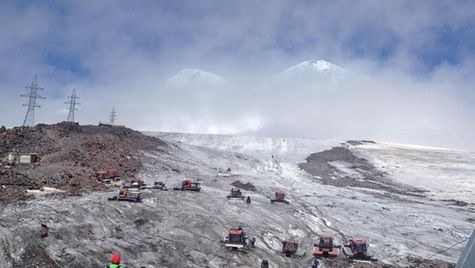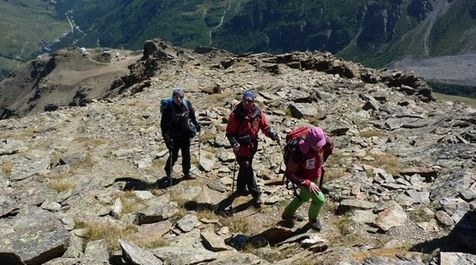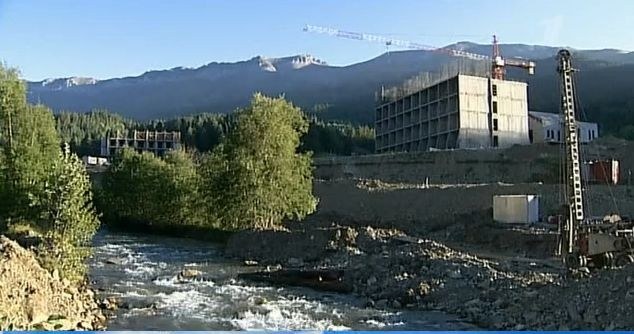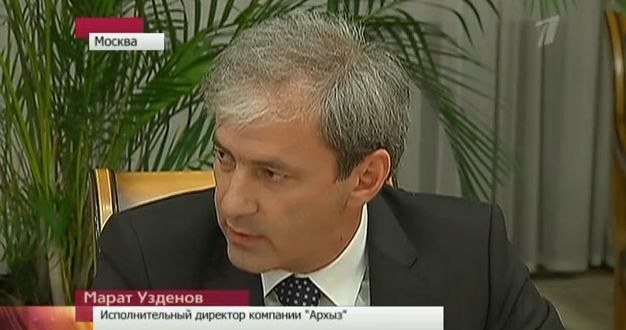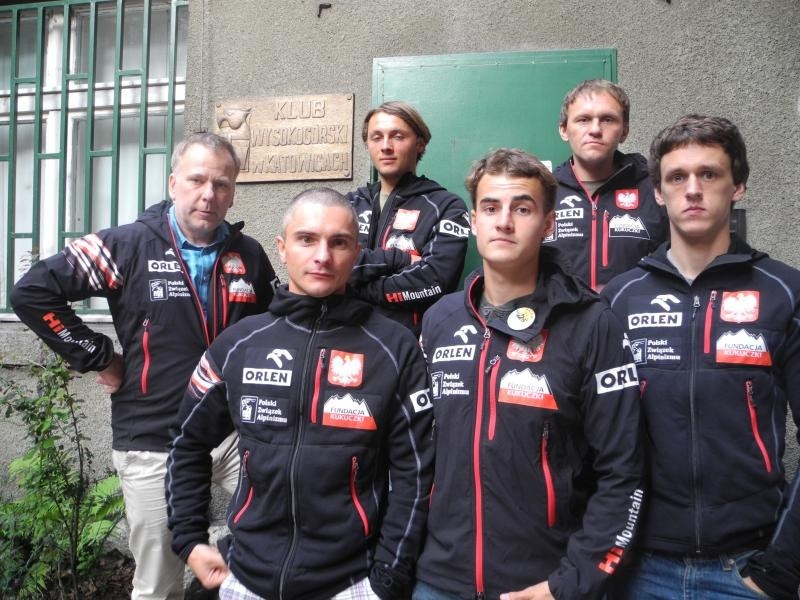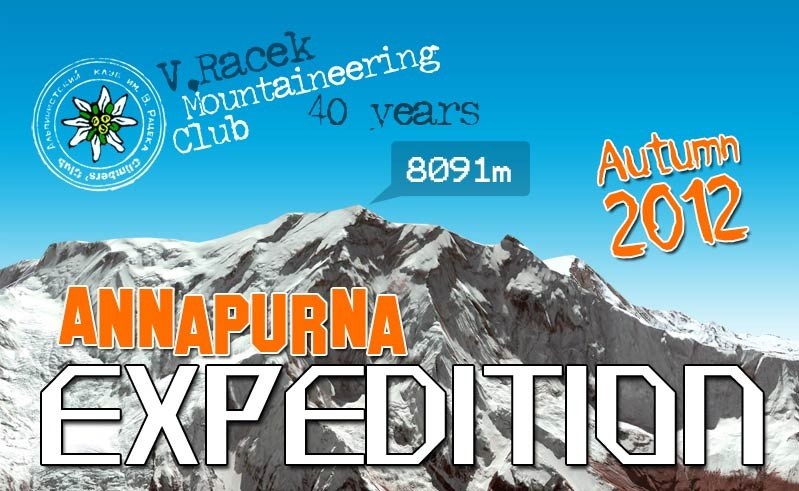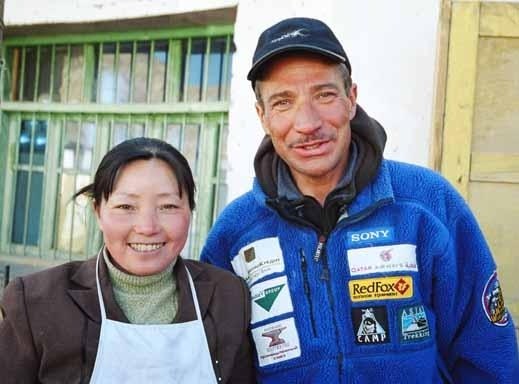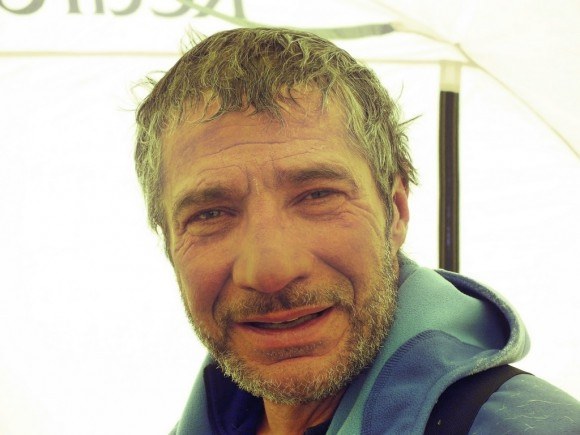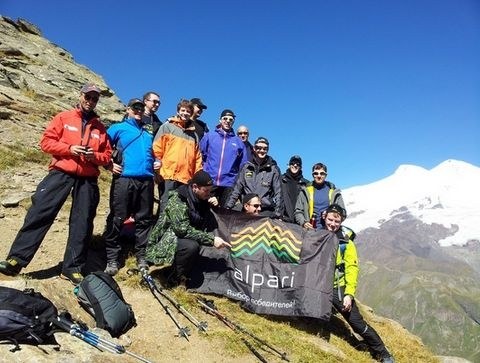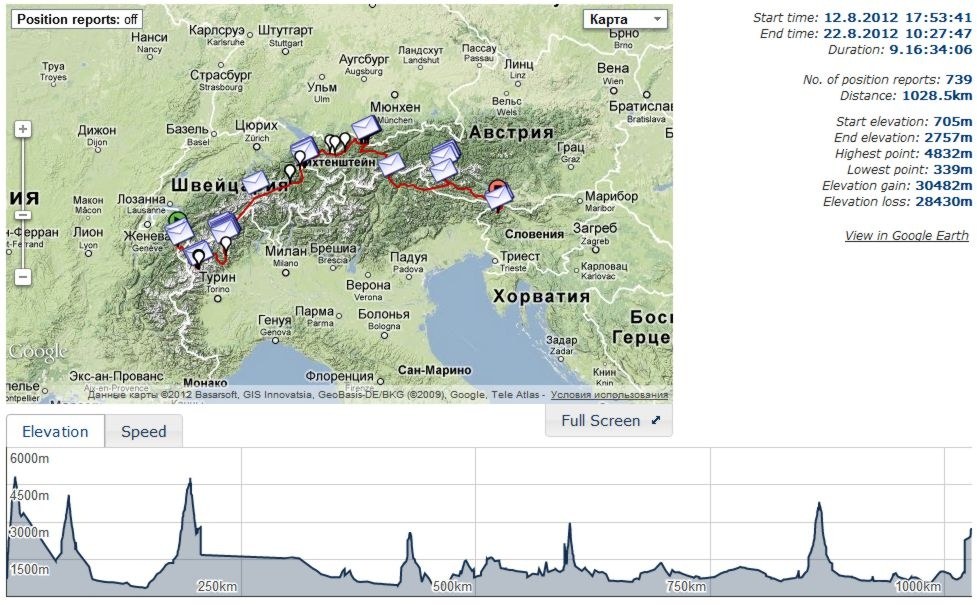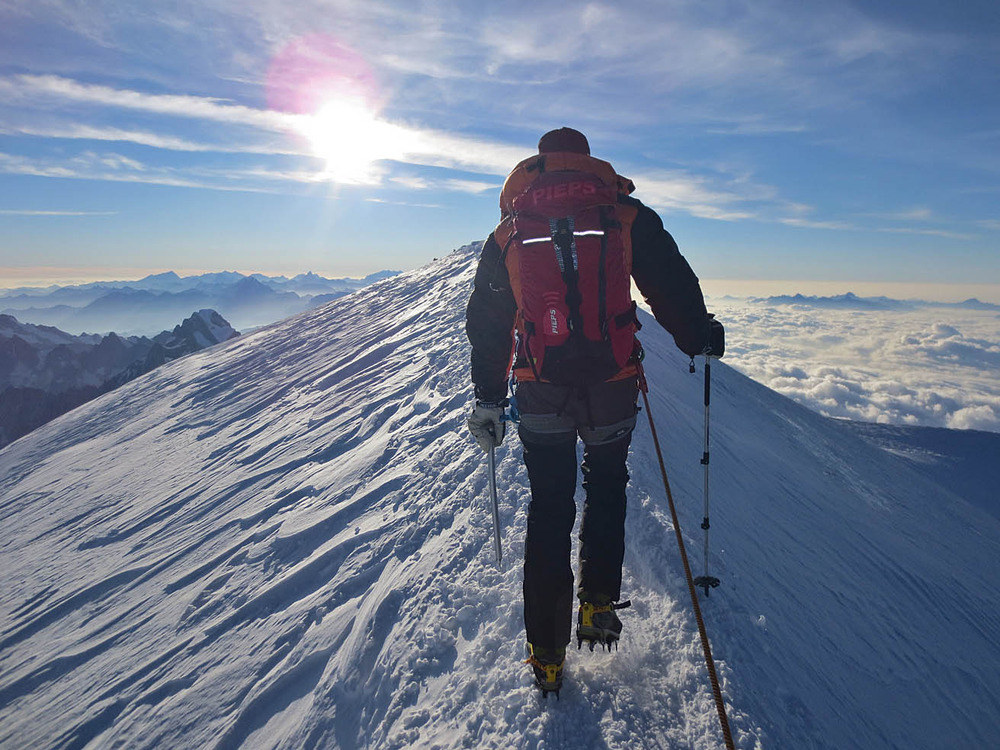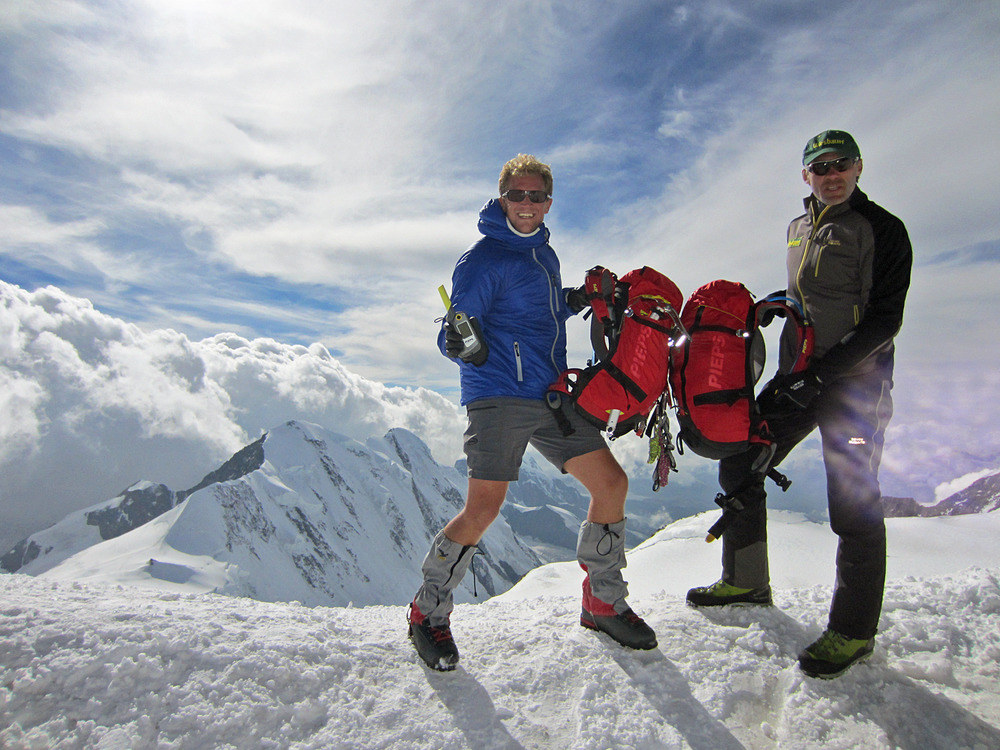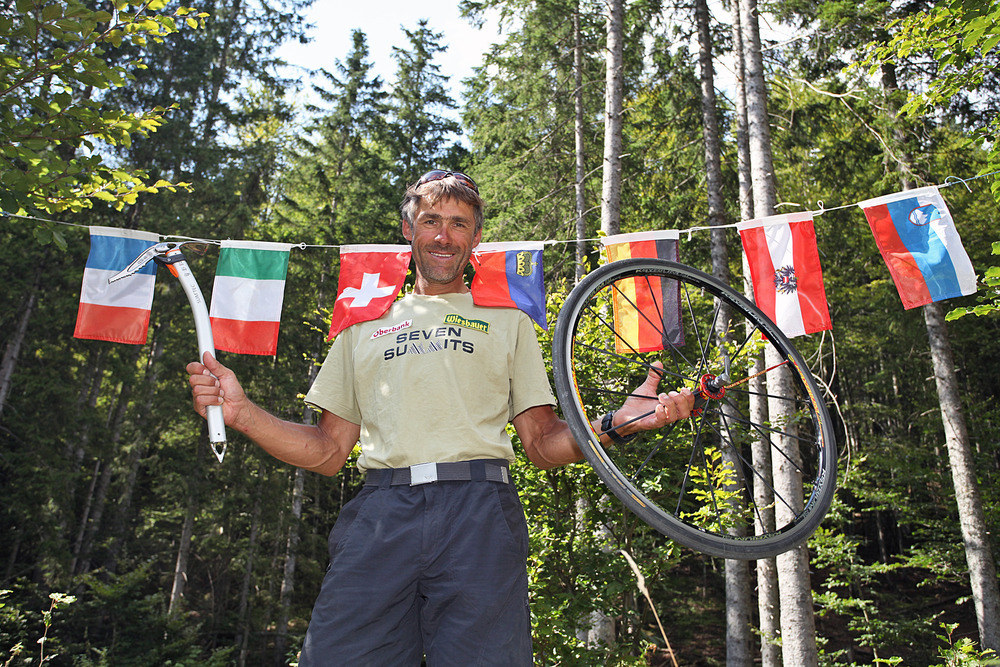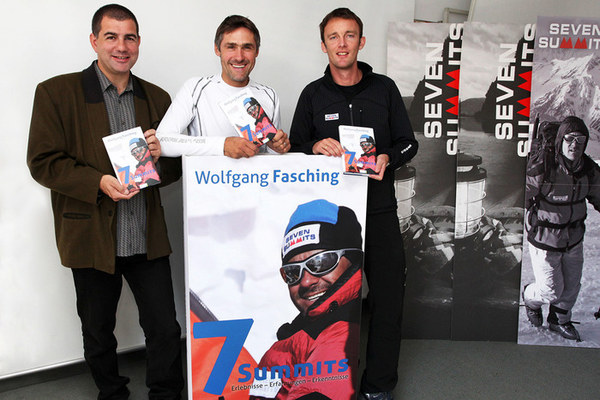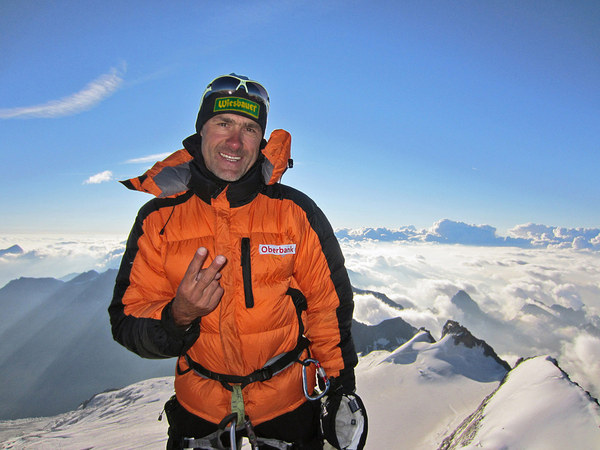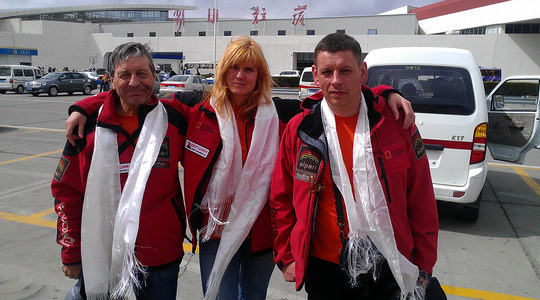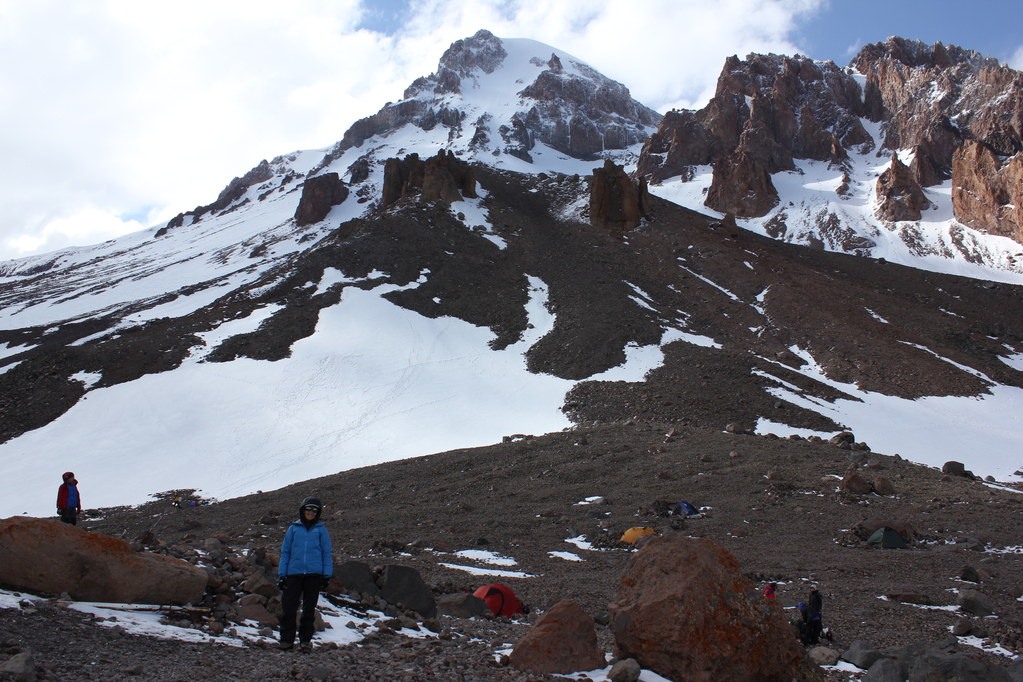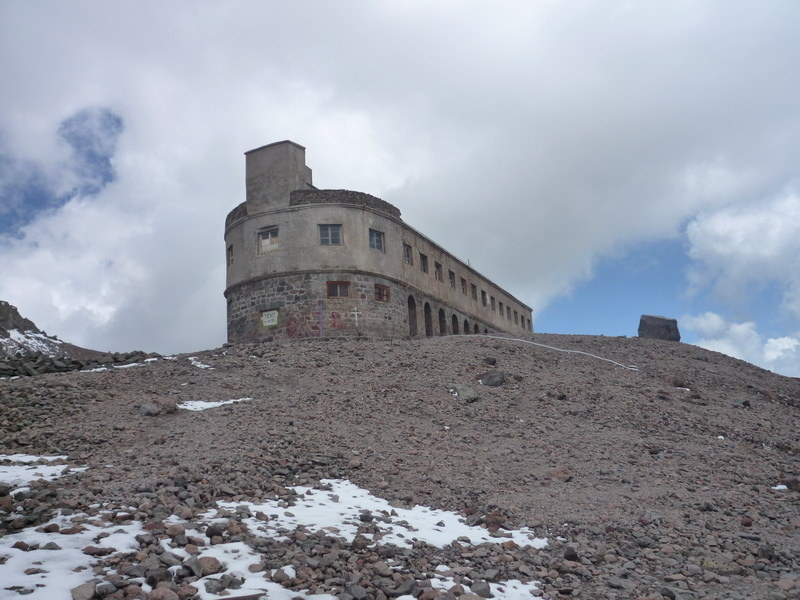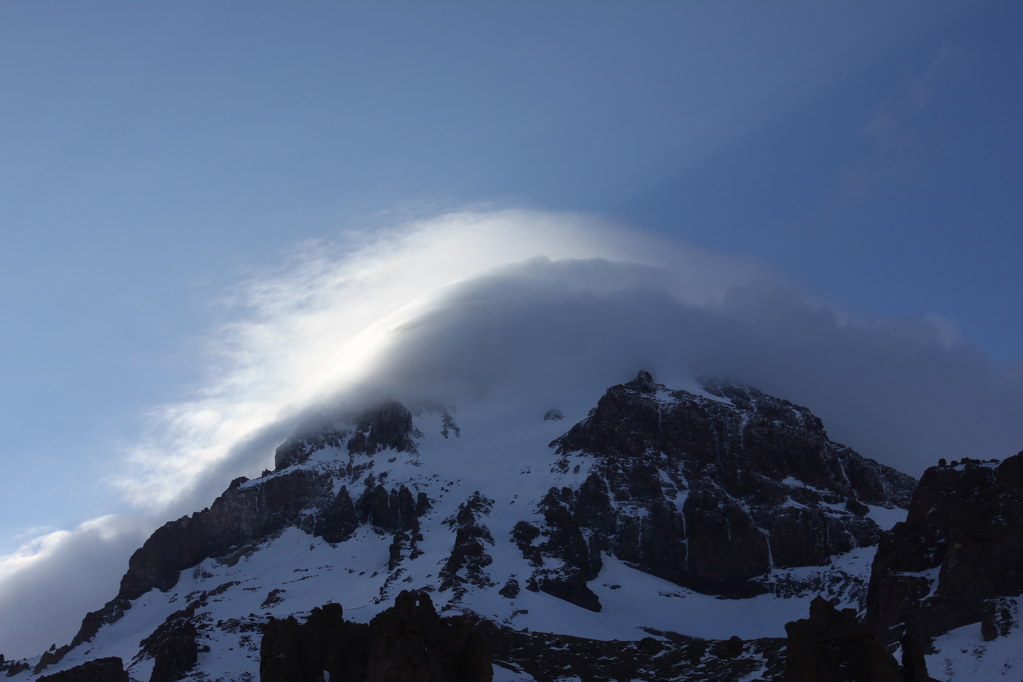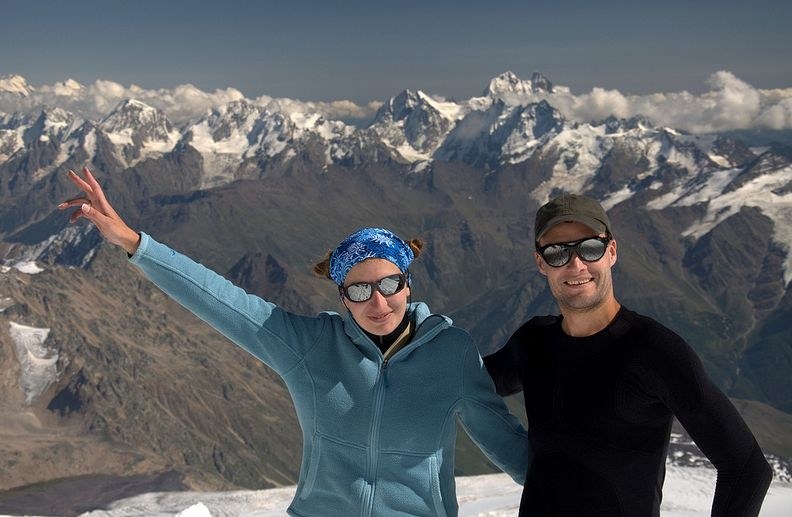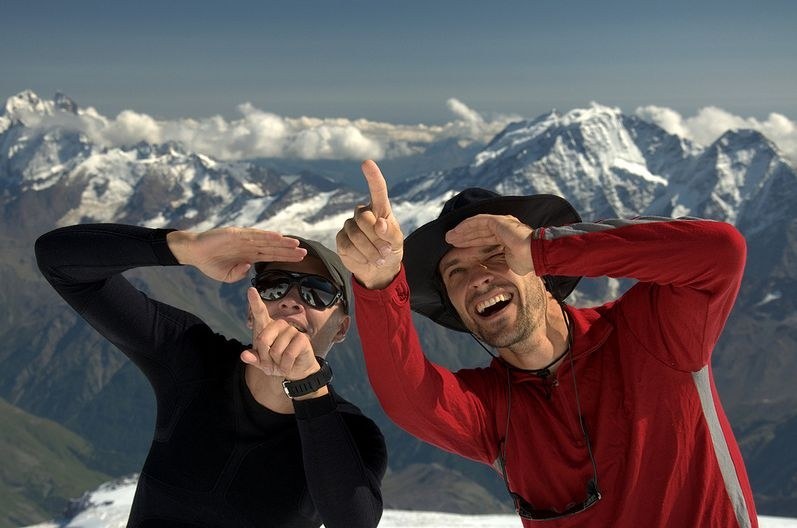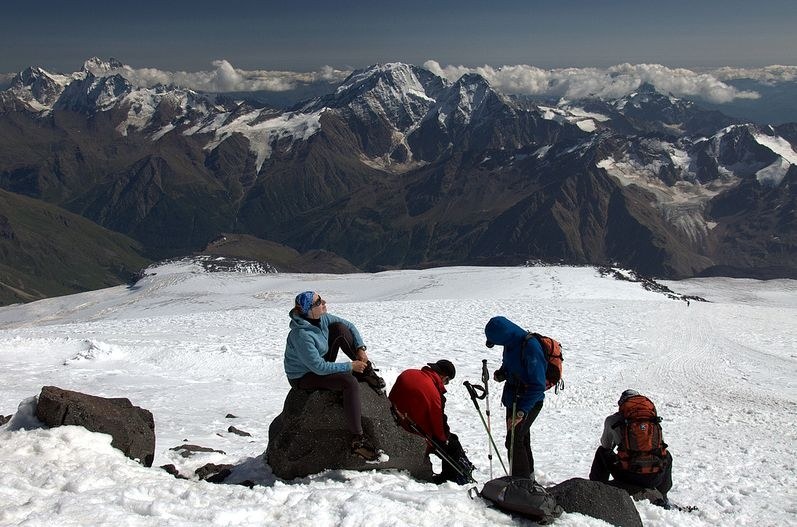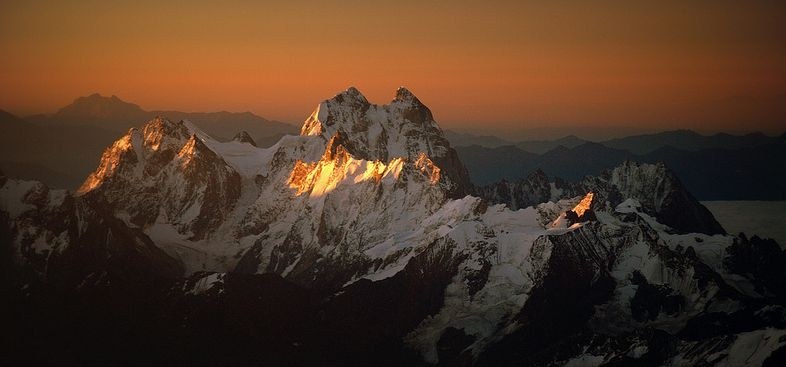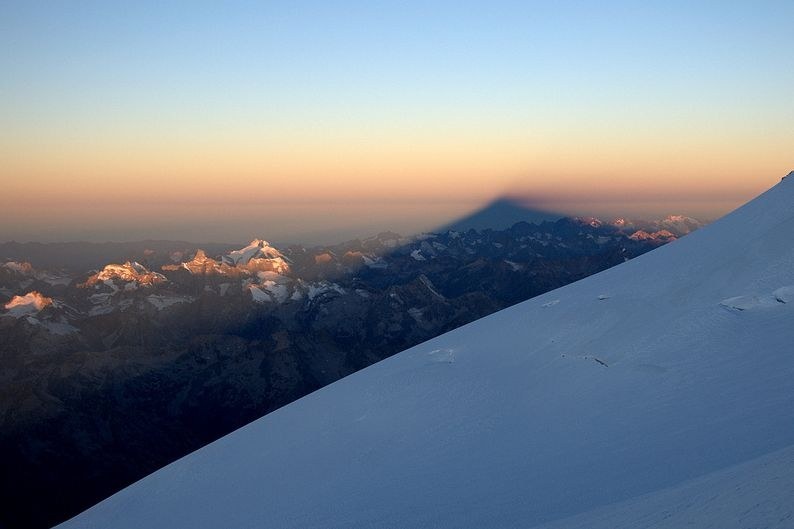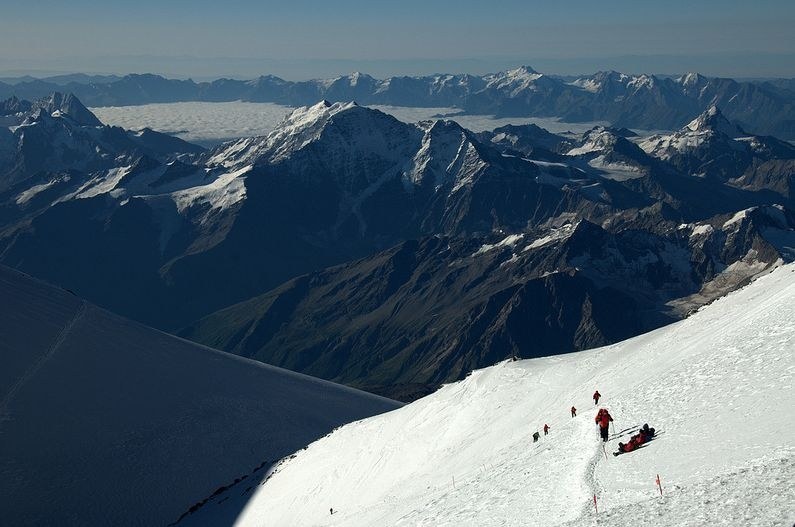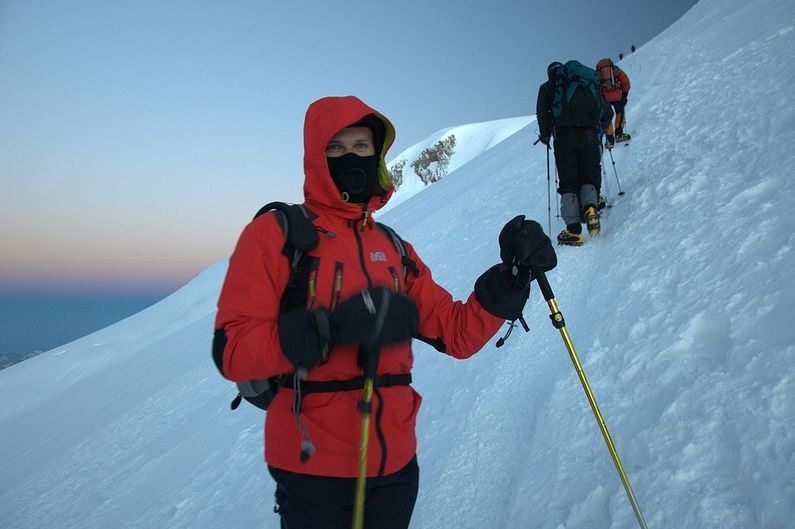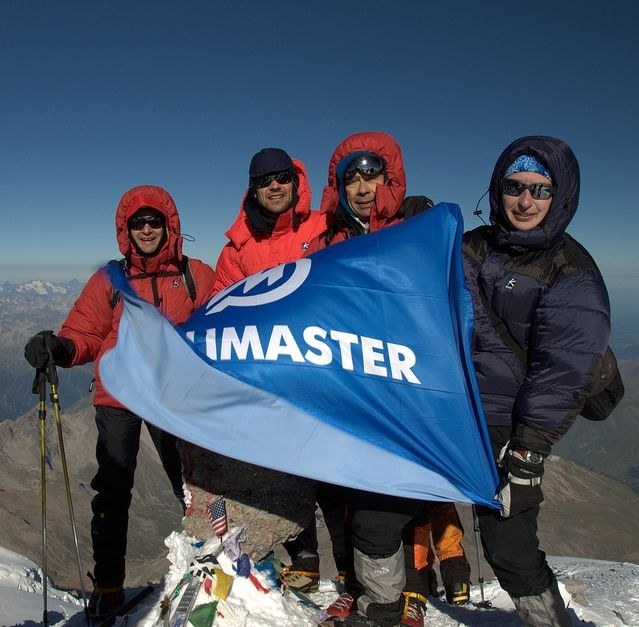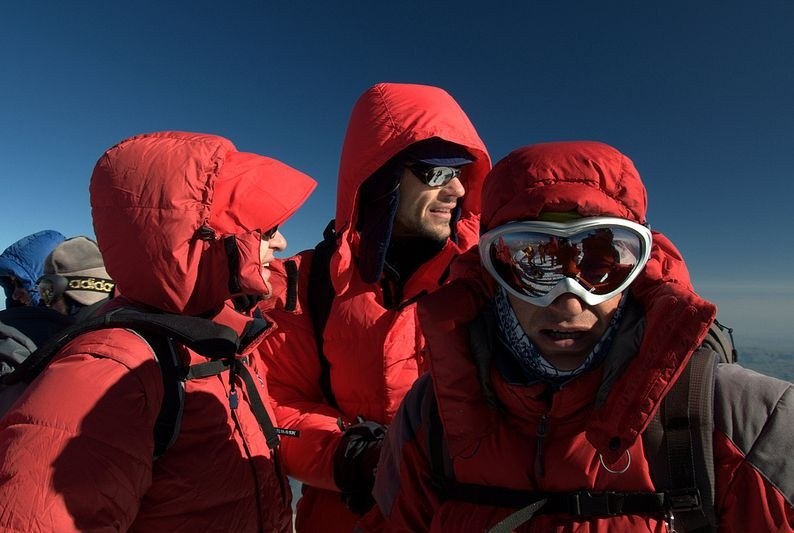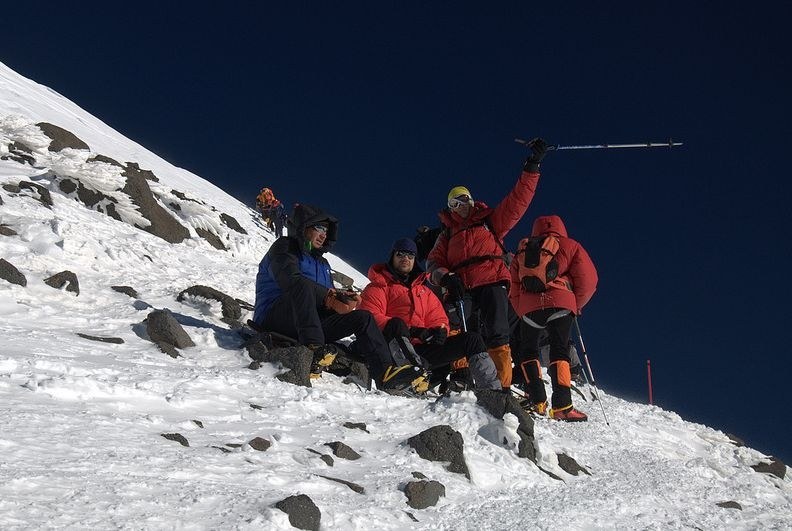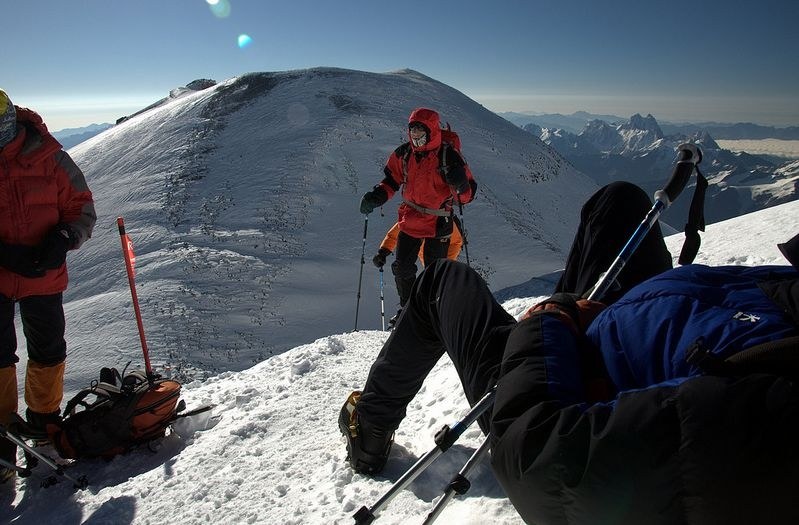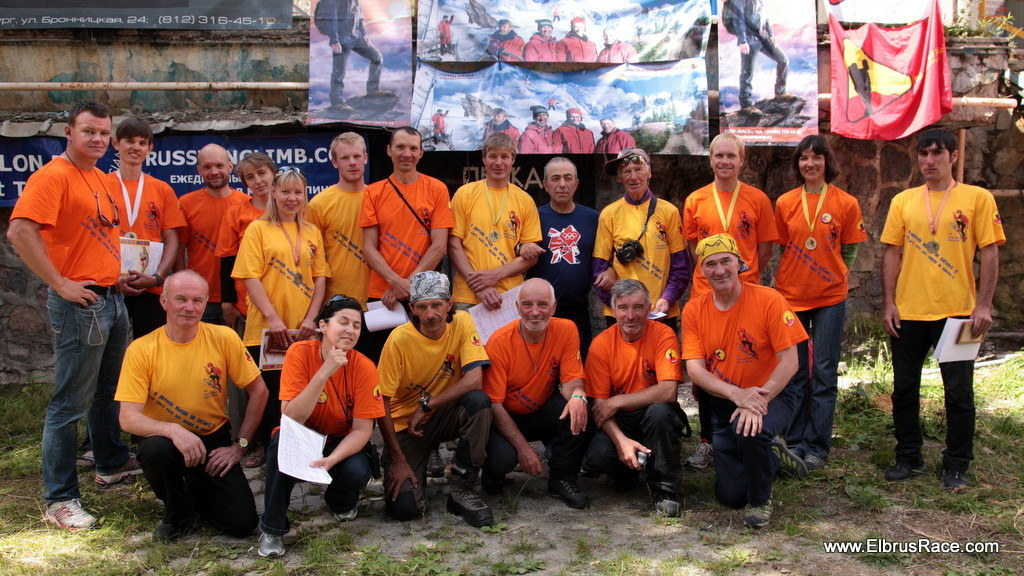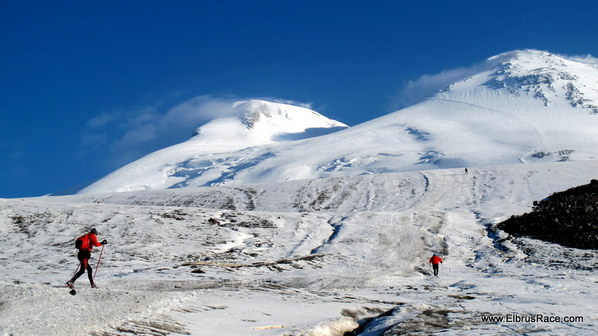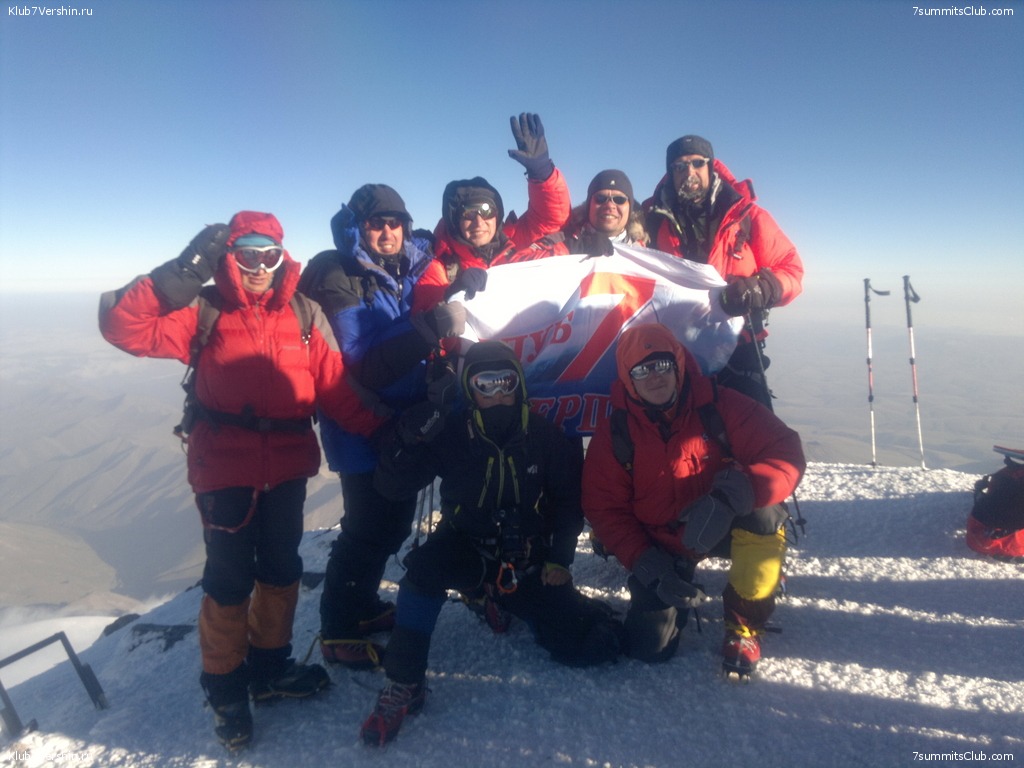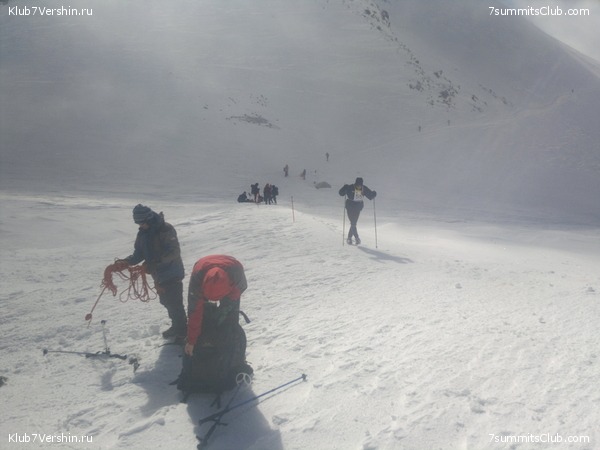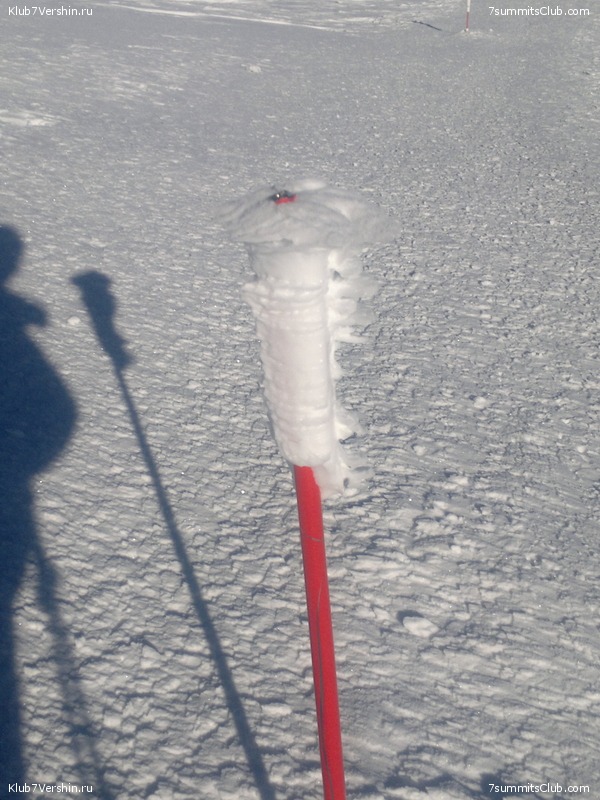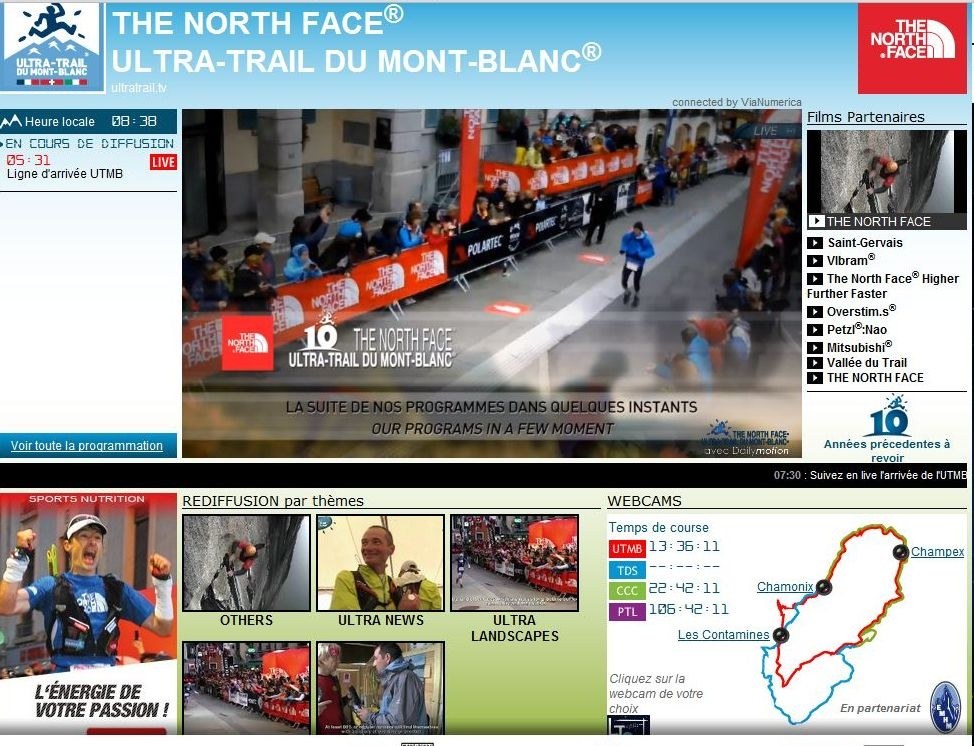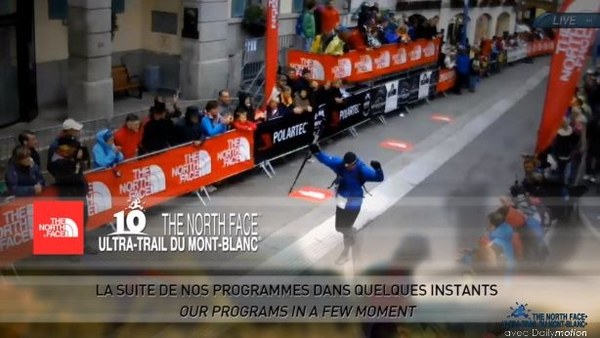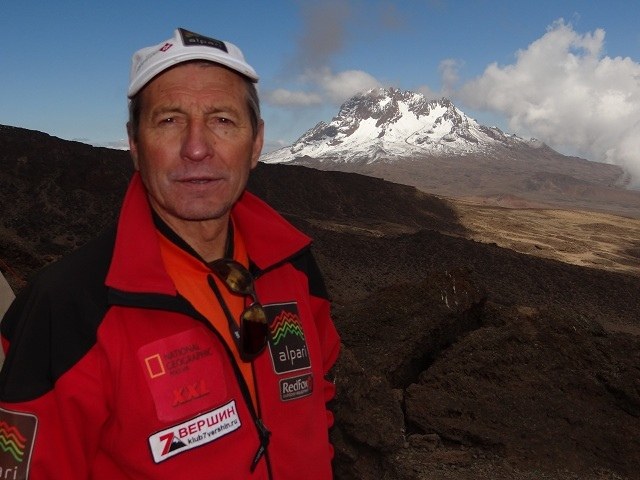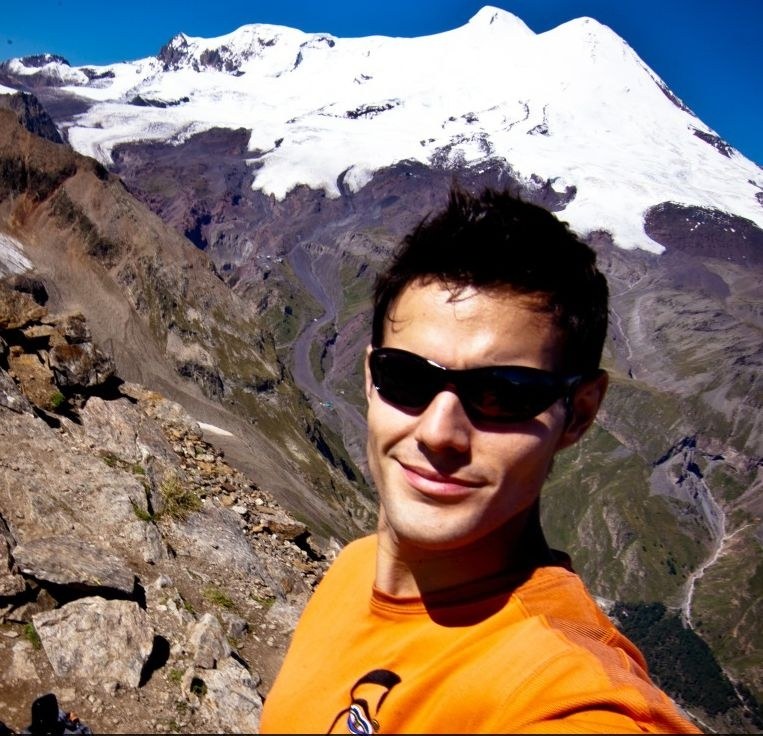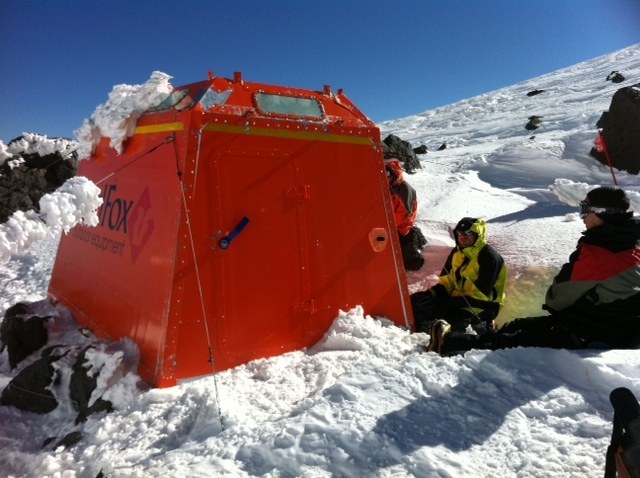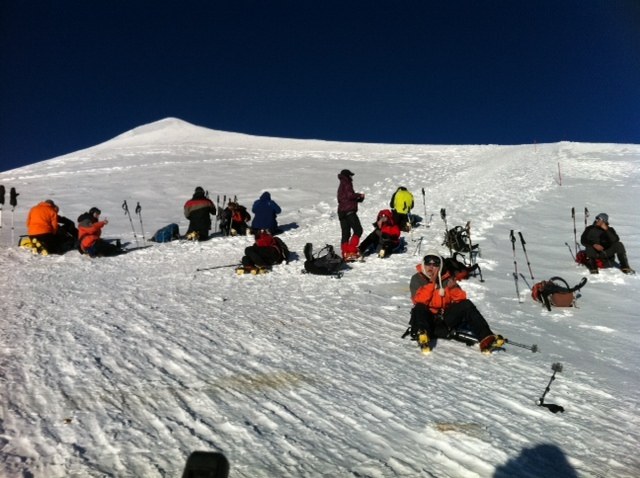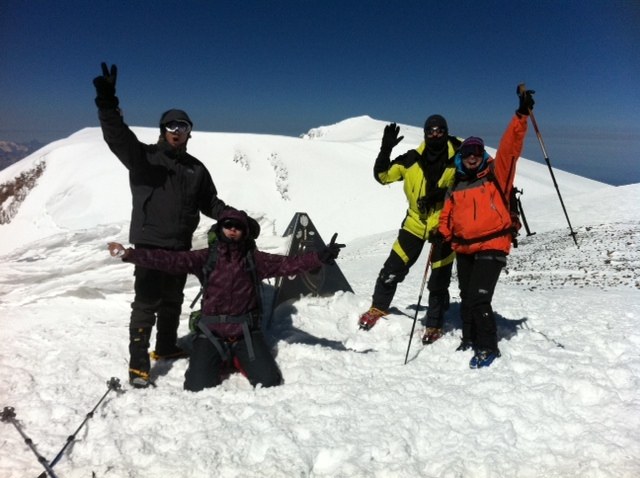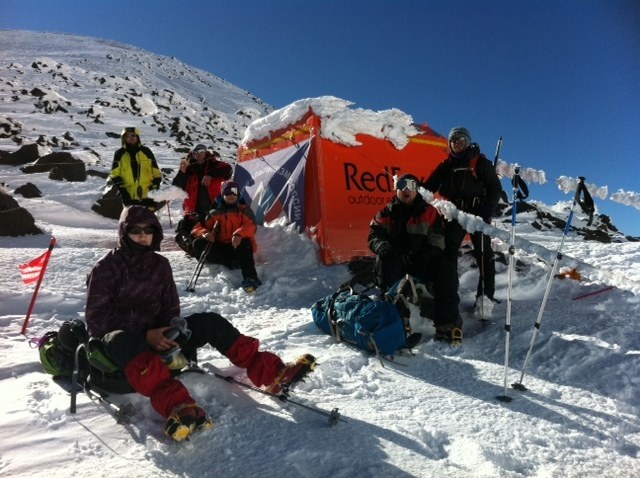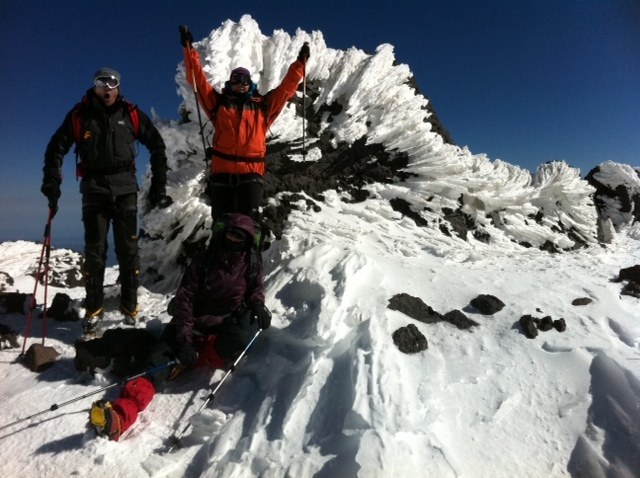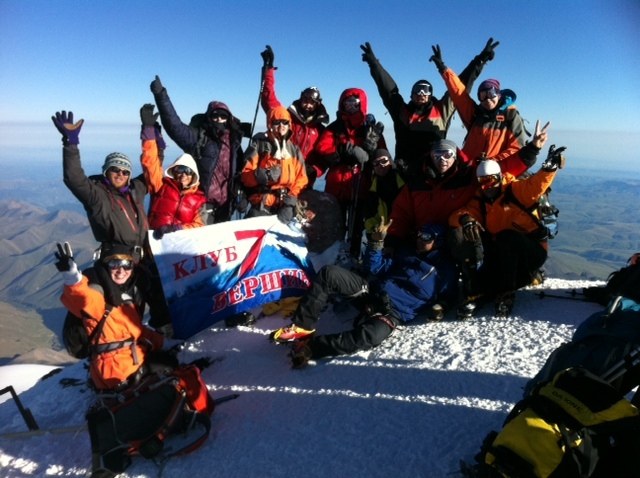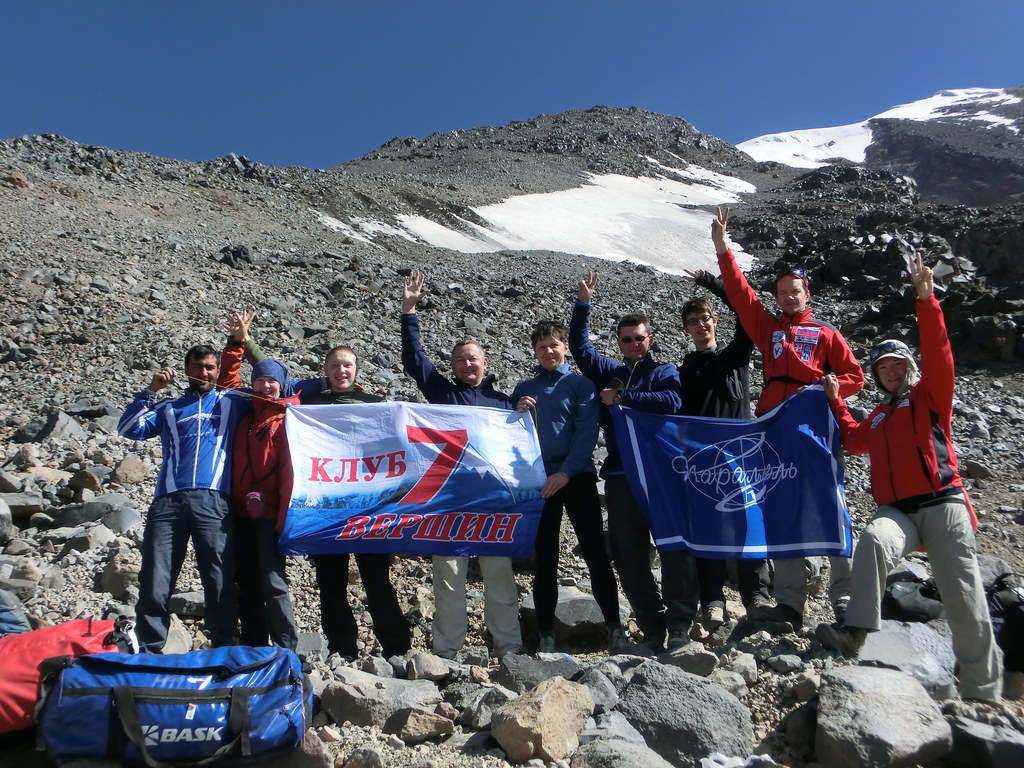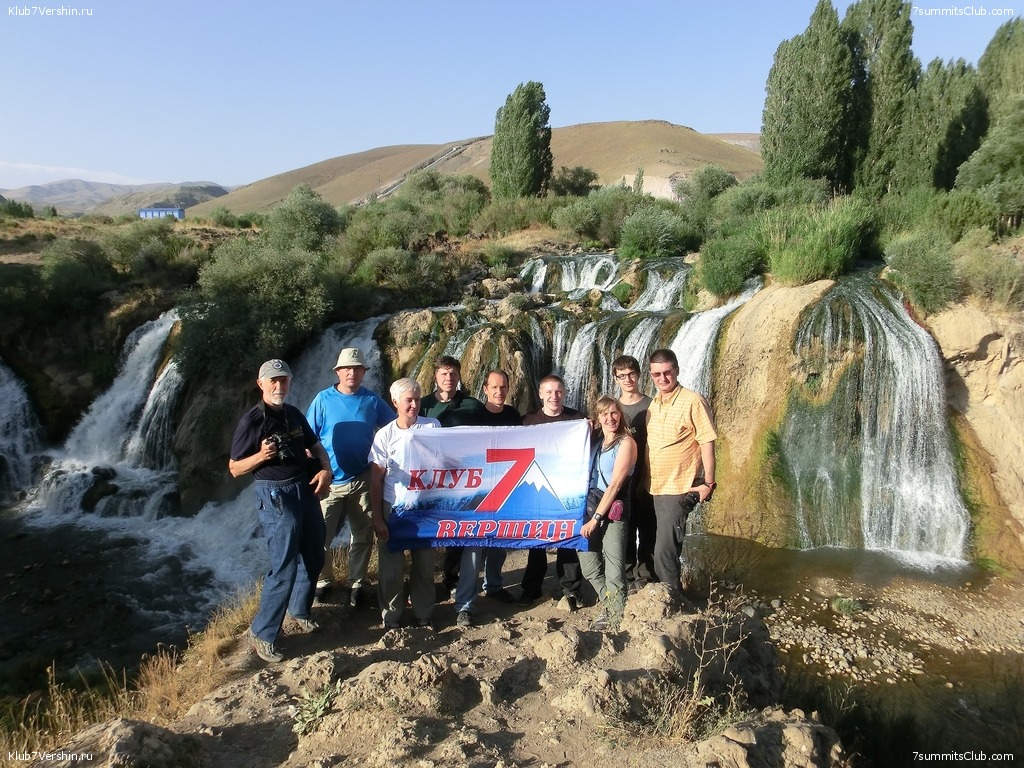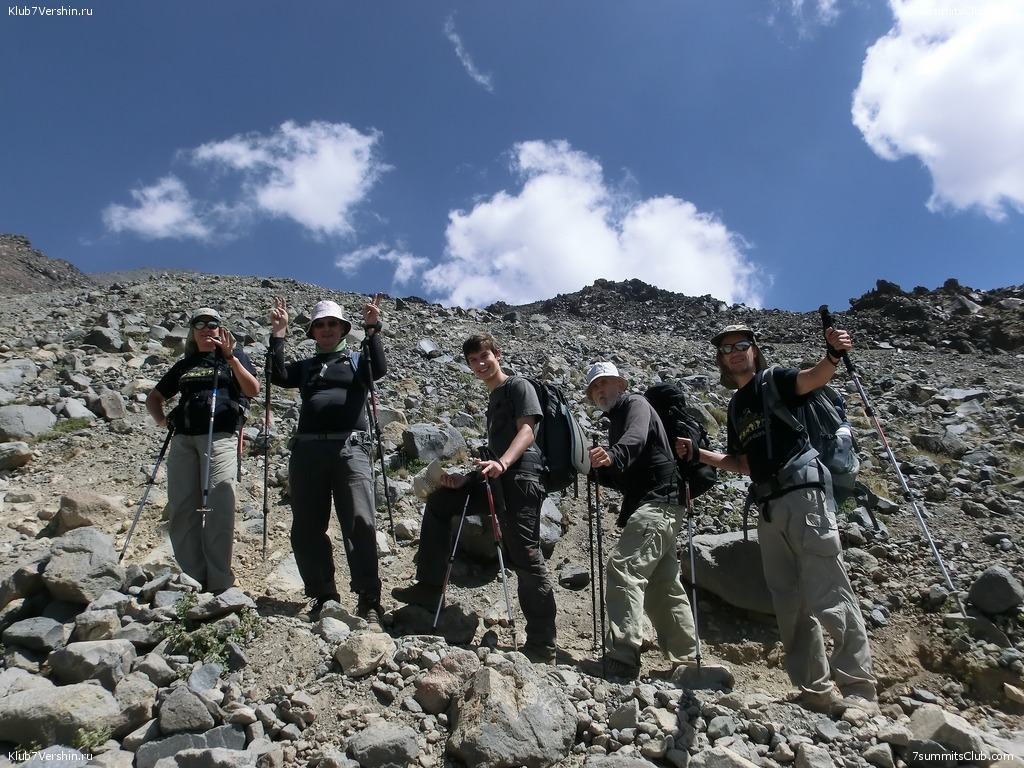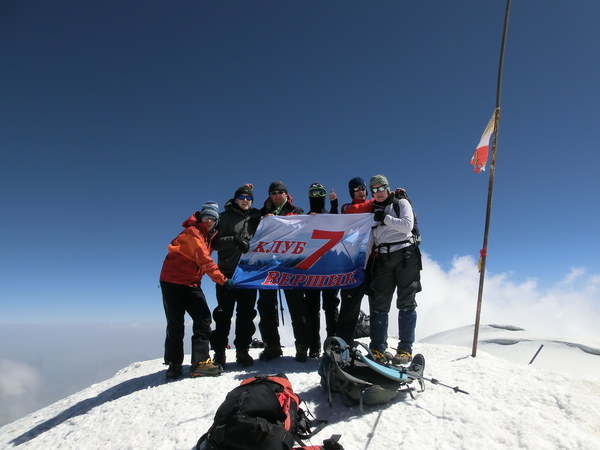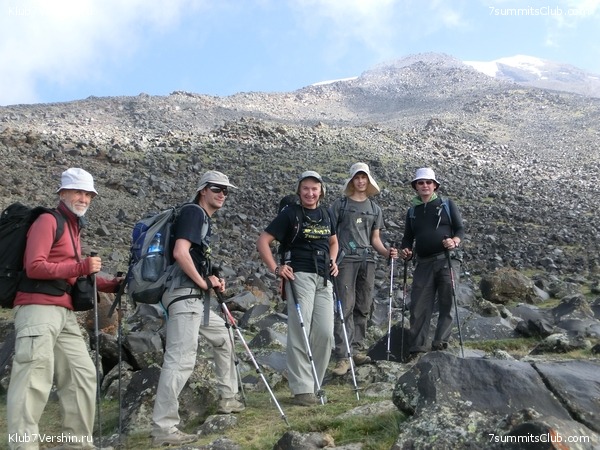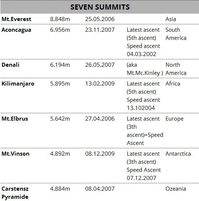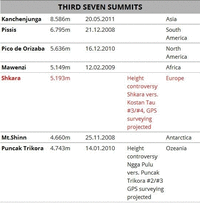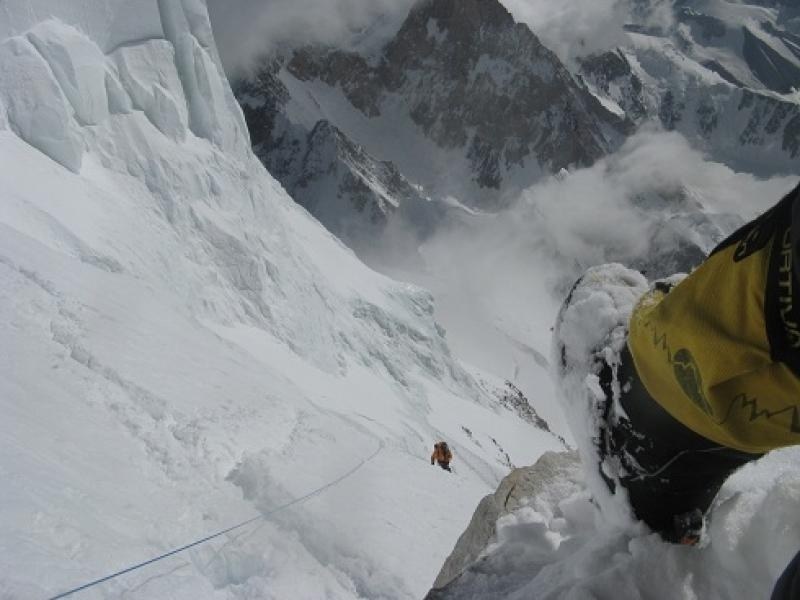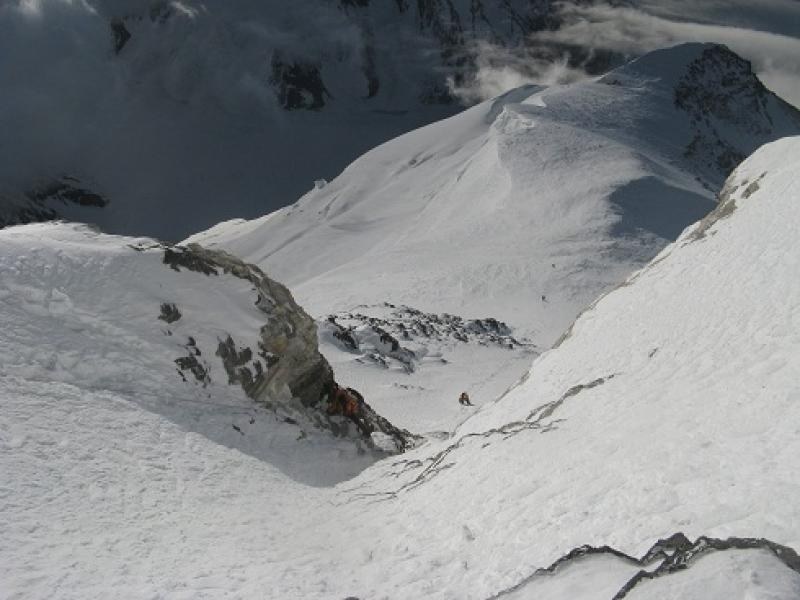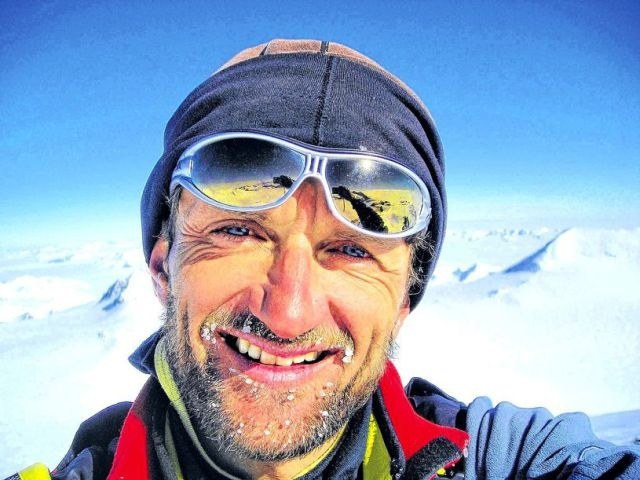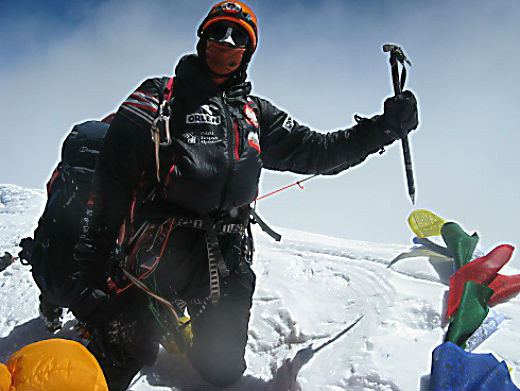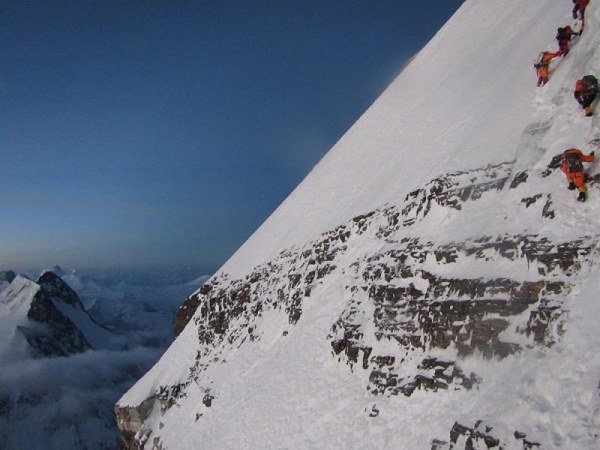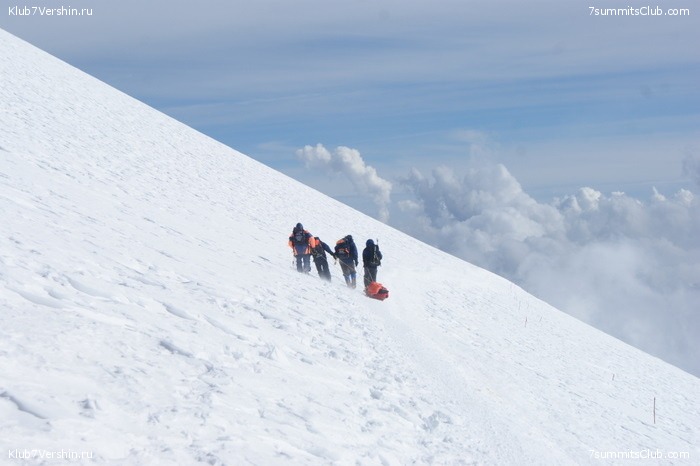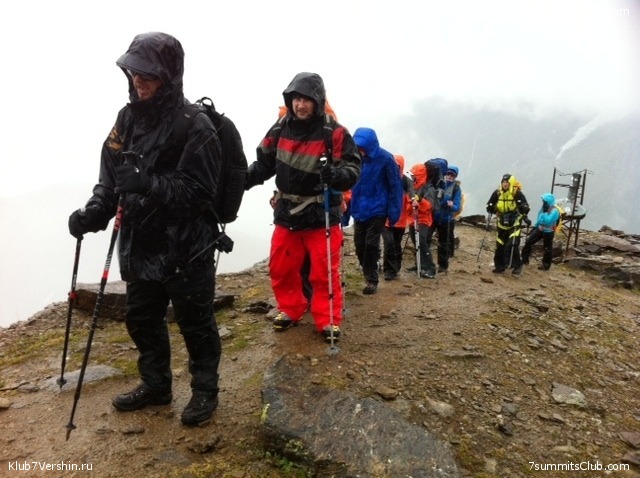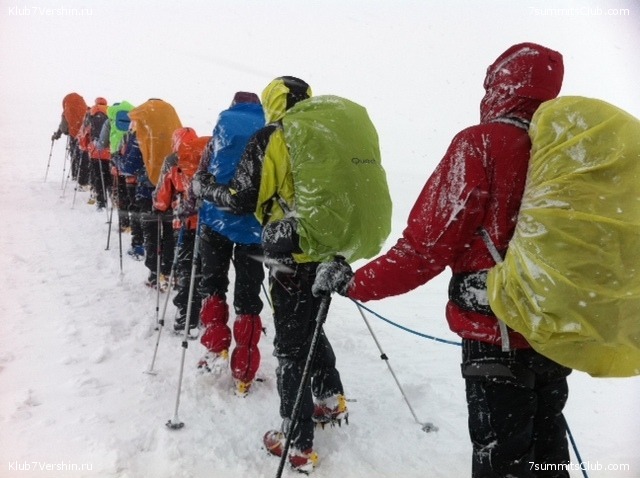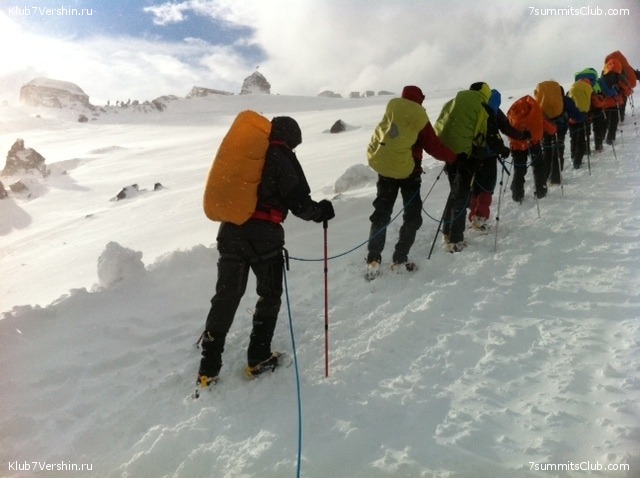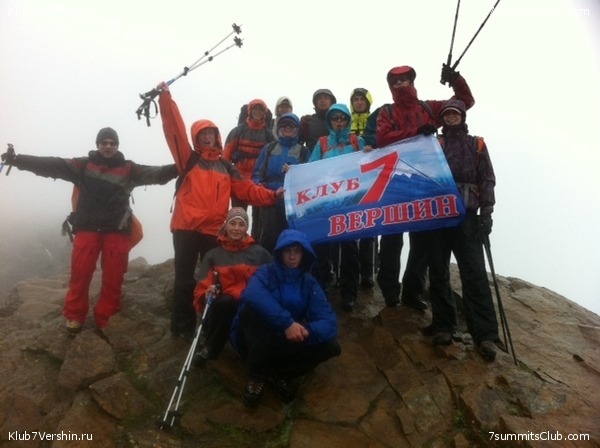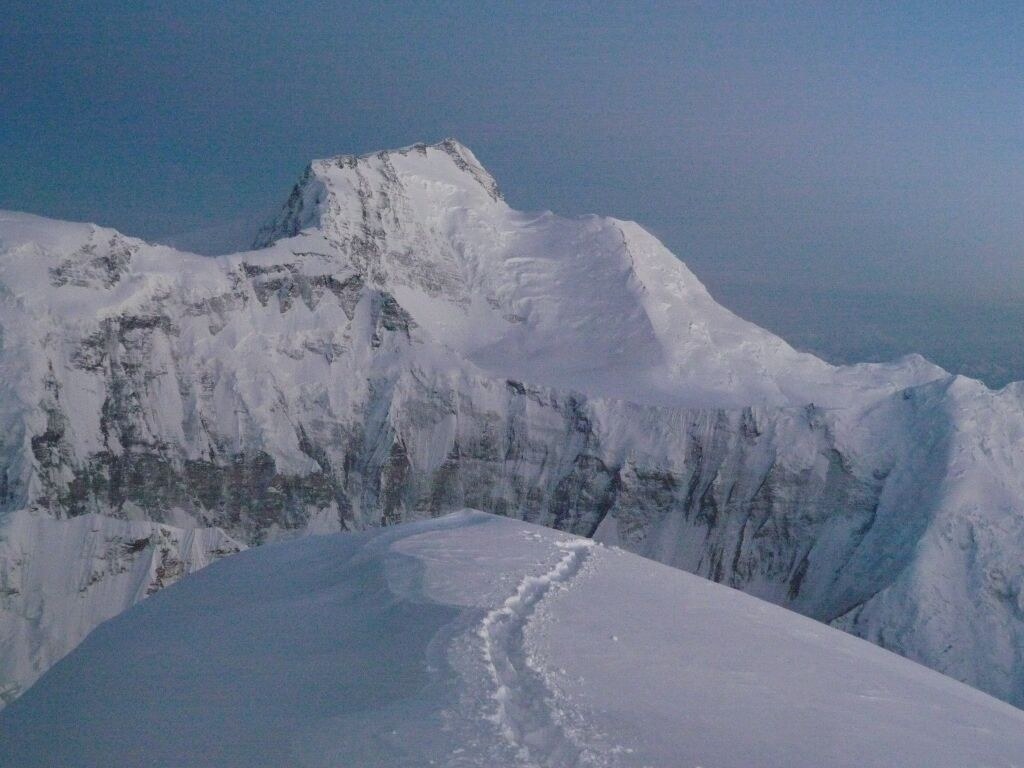All news
The team Alpari - 7 Summits for 300 days on Elbrus
Elbrus.
The team of Alpari Luda Korobeshko - Ivan Dusharin - Maxim Shakirov climbed Western Summit of Elbrus. During the descent Max injured his leg, so they cancelled a climb Eastern Peak. They descendded to the refuge only in darkness. That ia ...
The team of Alpari Luda Korobeshko - Ivan Dusharin - Maxim Shakirov climbed Western Summit of Elbrus. During the descent Max injured his leg, so they cancelled a climb Eastern Peak. They descendded to the refuge only in darkness. That ia fifth summit of the prokect. Next Kosciuszko and Vinson ....
North Caucasian resorts should provide good services - Putin
Elbrus.
North Caucasian resorts should provide tourists with good services, Russian President Vladimir Putin said today at a meeting with the head of Karachay-Cherkessia, Rashid Temrezov, RIA Novosti reports. "Good services and trained personnel ...
North Caucasian resorts should provide tourists with good services, Russian President Vladimir Putin said today at a meeting with the head of Karachay-Cherkessia, Rashid Temrezov, RIA Novosti reports.
"Good services and trained personnel are the most important things," Putin said.
"It is necessary to provide tourists with better services than European competitors. I believe that is a possible aim to achieve," Putin added.
Start of Autumn Season
Manaslu.
September, 8 a group of the mountaineering club “Vladimir Ratsek” from Uzbekistanheaded by Ilyas Tukhvatullin flies to the capital of Nepal Kathmandu. Their goal is Mount Annapurna, from the North (French route or Dutch Rib). ...
September, 8 a group of the mountaineering club “Vladimir Ratsek” from Uzbekistanheaded by Ilyas Tukhvatullin flies to the capital of Nepal Kathmandu. Their goal is Mount Annapurna, from the North (French route or Dutch Rib).
Members of the expedition: Alexander Bykov (born 1988), Yevgeny Yegorov (1956), Sergei Ilyasov (1957), Andrew Kutsy (1959), Ivan Lobanov (1961), Dmitry Serebryakov (1964), Gregory Yudin (1955).
Ilyas Tukhvatullin - one of the strongest climbers bothRussiaandUzbekistan. With a team of Russia, he was on the record routes on the North Face of Mount Everest and K2 West Face. To his credit there are many ascents of peaks above 7,000 meters, the climb of the North Face of Khan Tengri in duo with Pavel Shabalin, winter first ascent of the North Face of Aksu etc….
This season, the famous mountaineer Gleb Sokolov also goes to the Annapurna, and some climber from Moscow.
http://racek-club.climberca.com/
Autumn in the Himalayas...
Manaslu became the most popular autumn mountain in recent years. Once Chinahas restricted access to the peaks of Tibet (Cho Oyuand Shisha Pangma) an expedition Alpine Ascents International went to Manaslu (guide Garrett Madison). AsGermany's commercial expedition Amical (guide Herbert Wolf) and a team fromIndia, including a young climber Arjun who aim to go all 14 eight-thousanders. And a small commercial group gathered by American guide Ryan Water.
For the media, perhaps the most interesting event is an attempt of 73-year-old Spaniard Carlos Soria to climb his 12th eightthousander -Dhaulagiri. Almost no one would bother Everest this season. Polish expedition led by the indefatigable Arthur Haizer will run on its southern slopes. But its aim isLhotseby the normal route. Elbrus record holder Andrew Bargiel from Zakopane is one of its members. His goal - speed record ascent ofLhotse. From the base camp to the top a record holder is Mexican Carlos Carsolio climbed 23 hours 50 minutes. Autumn is a lot of snow, but it will not be the crowd on the railing.
The Polish team. On the left is 49-year-old leader, and near him 24 years old Elbrus record-holder
Mexican couple "Yuri - Laura" Yuri Contreras and Laura Gonzalez are now he trail through jungles to the foot ofMakalu, their next eight-thousanders.
Well, one more note. Declared Sophie Denis French expedition on Shisha Pangma will not take place. Do not blame the Chinese, just Sofia decided to become a mother. So her plan to complete the collection of 14 eight postponed or canceled. Time will tell.
ELBRUS: ONE MOUNTAIN, TWO TEAMS
Elbrus.
The upcoming phase of “Alpari: On Top of the World” will take our team to Russia’s Mount Elbrus, a “five-thousander” in the western Caucasus range. Each of the members of Team Alpari has climbed the twin-peaked ...
The upcoming phase of “Alpari: On Top of the World” will take our team to Russia’s Mount Elbrus, a “five-thousander” in the western Caucasus range. Each of the members of Team Alpari has climbed the twin-peaked dormant volcano several times. However, this time around, our trio is going to have some company. We’re sending some of our employees out to climb Elbrus with them.
Representing our company will be a group including some of our up-and-coming young managers and some of the head honchos at Alpari. For many of them, this expedition will be their first real taste of mountain climbing. They’re going to need to overcome their fears and push their bodies to the limit. At the same time, they will have to learn the basics of mountain climbing as they go: how to move across ice and snow, how to belay themselves and how to overcome the effects of the high altitude.
We asked our fellow Alpari employees: “Why are you going to Elbrus?” Here’s how they answered.
The Team
Andrey Dashin, Chairman of the Alpari Supervisory Board:
“The mountains are a passion of mine. It’s an emotional reprieve for the body and soul. In the mountains, everything is simpler. First you issue a challenge to the stony goliath. Then, at the summit, you get this incredible feeling: ‘Yeah. I’ve done it. I made it. I’ve overcome the obstacles and my personal weaknesses.’ There’s just the mountain and you. There’s nothing else. Up there, you experience a different type of awareness. In the mountains, something special takes place: I’m always coming up with new ideas and finding solutions to different problems.” Favorite Sports: Running, swimming, mountain climbing, boxing, skiing.
Andrey Vedikhin, CEO of Alpari UK, Alpari Founder: “I’ve never been to the mountains. I’m looking at the upcoming Elbrus climb as a warm-up for the December expedition to Vinson (Antarctica).”
Favorite Sports: Running (Andrey’s goal at the moment is to compete in a 2014 Iron Man triathlon: 3.86 km swimming, 180 km on a bike, 42 km running)
Ivan Kosilov, Investments. Ivan is an active snowboarder and paintballer. He loves go-carting, mountain climbing and rafting. He likely has as much experience in the mountains as any Alpari employee, having taken part in Alpari company trips to the Swiss Alps, the Altay region and Kamchatka.
He says Elbrus is “the next step towards conquering the world’s highest peaks.”
Andrey Kharchenko, IT Support. Andrey is an avid snowboarder and has visited several mountainous regions including Dombai, Khibiny, the Austrian Alps and Gornaya Shoria.
“I’m looking to conquer Elbrus so I can experience the mountains from a different perspective – climbing up instead of going down. The opportunity to climb the highest mountain in Europe isn’t something that comes around all that often. And the chance to do this with my co-workers makes it twice as nice.”
Sergey Belchikov, Consulting. Favorite Sports: Snowboarding, paintballing, go-carting, diving
“I thought it would be interesting to try something new with a group of friends. This definitely isn’t something I would do alone, but I simply couldn’t pass on the chance to make this trip with such a great group of people.”
Aleksey Redko, Broadcasting. Favorite Sports: Bike riding
The highest climb Aleksey has made is Mount Livadiyskaya (1,332 m) in Russia’s Primorskiy Krai.
“Conquering this mountain is on my list of things I want to accomplish in life. It’s great to have the chance to do this with such a great group of people.”
Aleksey Zayakin, Technical Support. Favorite Sports: Paintball, swimming, table tennis. When he was younger he used to travel to the Köpetdag Nature Reserve in Turkmenistan.
“Since I was a kid, I’ve always found the mountains to be beautiful. For me, Elbrus is a really interesting challenge. Not only that – I love traveling with friends.”
Ivan Koshkarev, Site Support. Favorite Sports: Snowboarding, fitness, motorcycle riding
Ivan has been to the Altay Mountains a number of times. Says Ivan, “I love all types of adventure travel including road trips and snowboarding.”
“Why am I going to Elbrus? I really want to add a mountain expedition to my memory bank.”
Yaroslav Efremov, Development. Favorite Sports: Diving, rafting
Yaroslav has taken part in a number of Alpari company expeditions: climbing the Swiss Alps, rafting in the Altay Mountains and hiking through the fog of the Kamchatka volcanoes.
“The mountains are one of my passions. I was born in the foothills of the Pamir range, so the love has always been there. What can you say when you are given the chance to climb Elbrus with your friends and co-workers? Of course I will!”
Stanislav Efremov, Software Developer, London. Favorite Sports: Volleyball, diving
“I was born 5 minutes before Yaroslav. I lived in Tajikistan until the age of 15. In that time, I managed to climb most of the surrounding foothills. I love the mountains.”
Maxim Andrianov, Legal. Favorite Sports: Paragliding, bike riding. Maxim has climbed Beshtau (1,401 m, Russia) and has ridden halfway up Elbrus on a gondola.
“A number of the people I fly with are also mountain climbers. They convinced me that the enjoyment you get climbing towards the sky is pretty much the same as when you’re flying through it. I’m not sure if I believe them, so I thought I’d give it a try to see if they’re right. It’s always better reaching your goals with a good group of people.”
Andrey Rybin, Legal. Favorite Sports: Downhill skiing, bike riding
“Elbrus? I don’t even know where to begin.”
We would like to wish both teams luck. We can’t wait to hear from you guys!
Wolfgang Fasching has completed his own version of the Seven Summits - for the Alps
Known Austrian athlete, cyclist and mountain climber, 45-year-old Wolfgang Fasching completed his version of the "Seven Summits - for theAlps." According to his idea, it was necessary as soon as possible to climb to the highest point of the ...
Known Austrian athlete, cyclist and mountain climber, 45-year-old Wolfgang Fasching completed his version of the "Seven Summits - for theAlps." According to his idea, it was necessary as soon as possible to climb to the highest point of the seven Alpine countries, with the move from one region to another on a bicycle. The composition of the Seven Summits of the Alps were: Mont Blanc (4810 m,France), the Gran Paradiso (4061 m,Italy),DufourPeakin the Monte Rosa massif (4,634 m,Switzerland), Grauspitse (2599 m,Liechtenstein), Zugspitze (2962 m ,Germany), the Grossglockner (3798 m,Austria), Triglav (2864 m,Slovenia).
Thanks to the good weather, Fasching succeeds without delay, less than 10 days (12 - 22.08. 2012). On the bike he rode more than 1,100 kilometers and climbed to an altitude of over 16,000 meters. Fasching is Technical Advisor of the 7 Summits project of SPORT EYBL & SPORTS EXPERTS GmbH
Wolfgang Fasching, born in Bad Radkersburg in 1967, lives in Neukirchen in Upper Austria. Married to Doris and father of Simone, he is an eight-time finisher of the Race across America (RAAM), the longest and probably toughest bikerace from the East Coast to the West Coast of the United States. Today, the three-time winner of this race works as a lecturer and presentator in the field of"mental strengths" He is a skilled painter, merchant with the examination for the master craftsman´s diploma and, since 2003, holder of a helicopter pilot´s license. Winner of the RAAM, XXALPSá 24 h World champion, world record holder in 12 h and 24 h bike racing, 24 h European champion in mountainbiking, World record holder “Crossing Australia” from 1999 – 2007, successful ascent of the Mount Everest in 2001, completed 7 Summits at 2009.
Elbrus: the fifth stage of the project “Alpari on top of the world”
Elbrus.
Tomorrow the fifth stage of the "Alpari on top of the world" project will start. A trio of experienced climbers aims to complete the world famous program "7 summits" in record time - 300 days. To climb the highest point of all continents ...
Tomorrow the fifth stage of the "Alpari on top of the world" project will start. A trio of experienced climbers aims to complete the world famous program "7 summits" in record time - 300 days. To climb the highest point of all continents for a record time forRussia, world record for teams of three…. etc. The team captain Lyudmila Korobeshko already set one record, becoming the first Russian climbed twice on the top ofMount Everest. The initial plan to go 7 summits by non-standard routes had to be changed because of the terrible weather conditions on Everest. But we hope that Lyudmila will set a world speed 7 Summits record for women.
The team of Lyudmila Korobeshko, Ivan Dusharin and Maxim Shakirov plans to climb both peaks ofMount Elbrus. Each member of the expedition visited the tallest mountain ofEuropemany times. But this time it will be a special case. A group of Alpari managers join them to try climb Elbrus. Among them Andrey Dashin – the leader of the company, active sportsmen and climber.
News, photos, videos and reports from the expedition are available at the project website: www.alpari-life.ru
Sergei Dudko and Dmitry Krasnov summited Mount Kazbek!
Members of the 7 Summits Club, Sergei Dudko and Dmitry Krasnov managed to get to the top of the legendary mountain, despite the strong wind. Georgian Guide Nukri Gvelebiani was a leader of their assault ofMount Kazbek. The group went down ...
Members of the 7 Summits Club, Sergei Dudko and Dmitry Krasnov managed to get to the top of the legendary mountain, despite the strong wind. Georgian Guide Nukri Gvelebiani was a leader of their assault ofMount Kazbek. The group went down to the starting point, to the meteostation. Tomorrow - down to Kazbegi and continuation of the program. Congratulations!
Blitz-climbing of Elbrus. PHOTO ALBUM
Elbrus.
August, 25 a blitz-climbing program was realized on the highest peak in Europe andRussia–Mount Elbrus. The participants had only half a day, for one acclimatization outing. But they were quite experienced climbers who are in good ...
August, 25 a blitz-climbing program was realized on the highest peak in Europe andRussia–Mount Elbrus. The participants had only half a day, for one acclimatization outing. But they were quite experienced climbers who are in good shape. This is what contributed to the success of this risky climb. As well as the excellent work of guides of 7 Summits Club - Sergei Onufrienko and Andrei Afrin. Climbers reached the top: Lyudmila Antonovskaya (Belarus), Konstantin Korotkov (Belarus), Dmitry Sokov, Roman Smirnov, Alexander Stolyarov, Sadik Hafizovich (Switzerland).
Our Belarusian friends shared photos of Elbrus on flickr.com
Full album is posted here >>>>>>>
International Elbrus Race: Competition Results
Elbrus.
Seventh International Elbrus Race competitions were held from August 26 to September 2. Weather these days was unstable, the main start was held on August 31. Strong wind in the summit forced organizers to limit the height of rise ...
Seventh International Elbrus Race competitions were held from August 26 to September 2. Weather these days was unstable, the main start was held on August 31. Strong wind in the summit forced organizers to limit the height of rise for most participants. Only four athletes have reached the top of Elbrus.
The competition was held in two categories. Classic: start at 3710 m finish at 5642 m. Extreme: start at 2400 m and finish at 5642 m.
Anton Proshchenko fromOmskwas the first on the track Classic. His time was 2 hours 28 minutes 2 seconds. He became the new recordsman of the competition International Elbrus Race on track Classic. The previous record belonged to Andrey Puchinin from Almaty - 2 h 34 min 33 sec. Just behind Anton, the second climber reached the top. It was Aggai Skopin (Kazakhstan, Almaty) – his time is 2 hr 31 min 35 sec. Rafael Ramazanov from Ossetia, has a third time, 3 hours 31 minutes.
Well-known guide Roman Gubanov won on the track Extreme. Roman, a permanent member of races, improved his previous result on this route - his time of 4 hours 31 minutes 11 seconds.
Then the weather turned bad on the summit of Elbrus, the wind increased. The judges, who were on duty on top, found to be impossible to finish on top. Other participants finished near the Saddle.
Olga Mikheenko was the winner of the women.
One of the participants of starts was an old friend of 7 Summits Club Boris Korshunov. He just in the day of start turned 77. On this day, our veteran, world record on the number of ascents on peaks above 7000 meters, in the 77th time climbed to the top ofMount Elbrus. According to him, he's going to be back to theHimalayas next spring.
Anna Dymova: good news from Elbrus
Elbrus.
August, 30 in the evening, the group ate dumplings. So that in the morning they were all cheerful and well-fed. August 31, our multinational team reached the highest point of Europe -Mount Elbrus. 10 members and 4 guides. And Vladislav ...
August, 30 in the evening, the group ate dumplings. So that in the morning they were all cheerful and well-fed.
August 31, our multinational team reached the highest point of Europe -Mount Elbrus. 10 members and 4 guides. And Vladislav Lachkarev attended two summits of West and East - that is, made the "Cross of Elbrus."
Tired but happy, all the band members the same day went down to the hotel "Povorot".
And today we are all waiting for a party at the end of the season in the Elbrus! Georgian menu, disco and delicious cocktails for all guests of the fest ! Come on!
List of groups:
Kuzmin George
Lachkarev Vladislav
Nechaev Michael
Kileinikov Sergei
Valishev Rustam
Murtazin Marseille
Mehran Imami,
Nrinder Singh,
Dawn Matthey,
Ricardo Maalihan.
Guide of the 7 Summits Club took 25th place in the competition Ultra-Tour du Mont Blanc
Artem Rostovtsev, guide of the 7 Summits Club, finished 25th in the competition Ultra-Tour du Mont Blanc. Start was August 31, finish - September 1. Artem was the first runner fromRussiawho took part in this prestigious competition. His ...
Artem Rostovtsev, guide of the 7 Summits Club, finished 25th in the competition Ultra-Tour du Mont Blanc. Start was August 31, finish - September 1. Artem was the first runner fromRussiawho took part in this prestigious competition. His time was 13 hours, 41 minutes.
Frenchman Francois d’Haene was the overall winner of the 103km race, with a time of 10 hrs 31mins 30 secs, 31 minutes ahead of Swede Jonas Buud, withUSathlete Michael Foote third with a time of 11 hrs 19 mins 0 secs.
Lizzy Hawker (GB) crossed the finishing line atChamonixin 12hrs 32mins 13secs to take the women’s title early this morning in the tenth running of the event.
She came in 16th overall in a race shortened and switched to a different course because of severe weather conditions. Lizzy Hawker finished 45 minutes ahead of second-place Francesca Canepa.
This year’s Ultra-Tour du Mont Blanc took place wholly inFrance.
Difficult weather conditions high on some of the Alpine passes forced organisers to alter the route to avoid some areas, meaning runners will not pass throughItalyandSwitzerlandas in previous years.
The course has been shortened as a result to 100km, and the new route will entail about 6,000m of ascent.
Organisers said conditions on the Col du Bonhomme, Col de la Seigne and Grand Col Ferret were too difficult to run the race over.
Ivan Dusharin: ‘Kabardakiada’ on Elbrus
Elbrus.
My first time on Elbrus was in 1967. It was part of a climb to commemorate the 50-year anniversary of the Soviet Union where 2,500 people would attempt the summit en masse in a grand spectacle called “Kabardikiada”. At the time, ...
My first time on Elbrus was in 1967. It was part of a climb to commemorate the 50-year anniversary of the Soviet Union where 2,500 people would attempt the summit en masse in a grand spectacle called “Kabardikiada”. At the time, I was studying to be a climbing instructor. The instructors-in-training at my school had been assigned a total of around 600 climbers – about 20 each. They were from all over the Caucasus region; from a number of different schools, clubs and organizations. As an aspiring climbing instructor, I was entrusted with a group of young climbers from Kabardino-Balkaria (a republic in southwestern Russia, just north of the Greater Caucasus Mountains), many of whom already had a few climbs under their belt. They arrived motivated and relatively well-prepared, but they were still very young. In the briefing I was given, it said that they were all at least 16 years of age (at the time, you had to be 16 to climb Elbrus), but just looking at their faces I could tell they were younger.
We put them through some training, but it was fairly minimal. It was raining most of the time.
The forecasts we were getting kept saying that July 29 would be the ideal day for the climb, so we began planning everything around this date. The day before the climb, we made our way to “Ice Base”. Our team was led by Honored Master of Sports (a title bestowed to esteemed athletes in the USSR) Aleksey Ugarov, one of the greatest climbers of that era and leader of the first expedition to conquer Peak Korzhenevskaya (7,105 m, Tajikistan).
I remember seeing Aleksey once in 1953. He was running around in nothing but leather shorts barking commands into a megaphone, trying to drive his team of young climbers onwards. It was quite a spectacle to behold, especially since the team hadn’t managed to get in the acclimatization it needed (due to bad weather) and most of us could barely move our legs.
Ice Base deserves a whole other story of its own. More than 2,000 people had been crammed into camp there. There were hundreds of tents, kitchens filled with provisions, a movie theater, a photo studio and a number of other buildings. We had initially been promised catering, but were instead treated to dry rations due to the heavy snowfall (the firewood was soaked). To us at the time, the food seemed fit for a king: chocolate, sour cream, fruits and other delicacies we had never even seen before in our lives.
On the morning of July 28, we all took part in a movie that was being shot about the expedition before setting out on an acclimatization climb. Amidst a backdrop of rockets being fired and shouts of “Hooray!” we began our ascent, only to get caught up in the deep snow within the first 10-15 meters. Many of us fell face-first in the snow while the cameras were rolling. A helicopter circled overhead, filming us from above as we waved our flags and banners. One small group of people arranged themselves to spell out “50 ëåò ÑÑÑД (50 years of the USSR). We all got tired pretty quick, and then came a strong snowstorm. We descended back down to our tents without getting in the proper acclimitization.
We began our attempt at the summit on July 29 at 2 AM. Our long “centipede” worked its way up to the “Refuge of the Eleven” where we were met by a crowd of climbers who had been camping out there. Most of our team made it to the refuge, but afterwards, our ranks started to dwindle. People were beginning to collapse; their legs just giving out on them. Many of the climbers who were falling were athletes: fighters and weightlifters that were not used to giving up. A volunteer rescue team was there to bring them back to their senses or to simply carry them back down the mountain. There were others who simply sat down in the snow, looked at their instructors and said that they couldn’t go any further. Many of the people we were forced to leave behind asked those of us left standing to take their “tokens” to the summit.
Before the climb, each of us had been given a token: a small aluminum disc inscribed with our name, hometown and date of birth.
At the summit, we were to drop this token into a metal box. We were told that this box would be reopened in the Year 2017 – the 100-year anniversary of Soviet power – and that each of the climbers who was still alive would be invited to a huge gathering to commemorate the climb. So it wasn’t really a matter of honor or pride; they just wanted us to drop their token in the metal box so they would be invited to the 100-year anniversary party and maybe receive some sort of award.
We ascended the mountain slowly but surely, losing some of our comrades along the way. Most of my young climbers from Kabardino-Balkaria had been forced to throw in the towel. As we approached the Pastukhova Rocks, only 4 remained from my original group of 20: a father and his son who was studying at the Nalchikskiy Institute and two young girls who simply refused to give up. At one of our stops along the way, one of the girls passed out, toppling over like a felled tree. I barely managed to catch her. I squeezed lemon juice into her mouth to revive her and sent both of the girls back down to the gathering point below, essentially passing them on to another instructor. The three of us still remaining pressed onward, gathering tokens along the way. I made it to the top along with the father-and-son duo. We dumped a handful of tokens into the metal box and had our pictures taken. We also had the chance to see a motorcycle that Mikhail Kakhiani and some of his friends had hauled up to the peak earlier. On the summit, rallies were held, speeches were given, shouts were heard and flags were waved. Everyone was having the time of their lives. All of my fellow instructors made it to the summit as well. We chatted for a while before leading what was left of our teams back down. The weathermen had been right on the mark. That was pretty much the only day we could have made an attempt at the summit. When we got back to the stadium at the Itkol Hotel below, we were given a hero’s welcome, as if we had achieved something incredible. There were flowers, fruits and drinks (only of the non-alcoholic variety for the climbers). I’ll remember everything that happened that day for a long time to come. My young climbers thanked me for teaching them and for helping them along. A few of us exchanged addresses and stayed in contact for a number of years following our climb.
So that’s how it all went down. My first climb on Elbrus was truly a once-in-a-lifetime experience.
LYUDMILA KOROBESHKO: THE ELBRUS OF MY YOUTH
Elbrus.
Elbrus. Its beaming twin peaks beckoned to me as I looked through my window as a child. Occasionally, some of my friends from school and I would hike towards the glistening giant. Sometimes we would even make it as far as the Bermamyt ...
Elbrus. Its beaming twin peaks beckoned to me as I looked through my window as a child.
Occasionally, some of my friends from school and I would hike towards the glistening giant. Sometimes we would even make it as far as the Bermamyt Plateau. At this point in my life, the thought of climbing Elbrus hadn’t even crossed my mind.
Later, I joined the mountaineering club at my university. We began to draw nearer and nearer – first to Irykchat (a glacier on the east side), then toChegetPeak(or Maliy Donguzorun, if you prefer)… Elbrus, however, remained out of reach. It was too great a challenge for us with our limited experience and our sub-par climbing equipment.
It was finally in 1996, the year I graduated, when our coach pulled a few of us aside and told us to start preparing for Elbrus. We had less than a month before our expedition, so we really had to get down to business. I would jog around Mashuk (a 10-kilometer run) three times a week. Every time the twin-peaked Elbrus came into view as I rounded the bend, I would think to myself, “I can do it. I have to. I haven’t been training this hard for nothing.” I imagined that this would be one of the major achievements of my early years. One of my friends was going to give birth. Another had found a job. I would be the one who climbed Elbrus.
On weekends, we would hike up to the highest peak in the foothills – Beshtau (1,401 m). I remember one of the last hikes before the big climb. My girlfriend and I were wearing our new shoes, which we had bought especially for Elbrus. They were leather, with a layer of Vibram. We spent just about everything we had on those shoes. The plan was to wear them in a bit so we wouldn’t get blisters on our big climb ahead. It turned out to be a good idea. What we had anticipated might have otherwise happened on Elbrus happened instead on Beshtau. Our feet were covered in blood. I had never had blisters that bad before.
The two of us were a sad sight as we headed back from Beshtau to meet up with our coach. I was limping, trying to hold back tears. Natasha forced me to keep a straight face: “Lyudmila, I know it hurts, but hang in there. You need to make it seem like everything’s fine. Smile!” It took every last ounce of my strength to force a smile.
Finally the time came. Elbrus isn’t just a climb. It’s a journey. We started out from the Ullu-Hurzuk valley and worked our way through four passes up to the Kukurtliu wall. In other words, we hiked from west of Elbrus to the north side of the mountain. On the way, we even saw a bear!
We started our attempt at the summit from the Oliiniykovskiy Hut at 3,600 m. It was around 2 o’clock at night. It was windy. Around 5 o’clock in the morning the wind started to get even worse. “It’s nothing, just a light morning breeze,” our guide told us. That quote would later became an inside joke among us, especially since the winds got even worse – it was practically a hurricane up there. Despite the worsening conditions, we knew there was no turning back. We had worked too hard. We finally made it to the western summit around 3 o’clock in the afternoon. Sure, we were slow – the climb took us more than 12 hours – but we made it. And that’s what counts.
I have had the chance to climb Elbrus a number of times since then: with friends, with clients, the eastern peak, the western peak… even the “Cross”. However, that first climb will always be the most special to me.
Alpari-life.ru
Article of Canadian climber, operator and social activist Elia Saikaly
Elbrus.
Currently, Canadian Elia Saikaly is on the slopes ofMount Elbrus. August 24, he was with a group on Cheget .. Great weather contributed to good photos. On the eve of his departure for Russia Saikaly published a nice article about the ...
Currently, Canadian Elia Saikaly is on the slopes ofMount Elbrus. August 24, he was with a group on Cheget .. Great weather contributed to good photos. On the eve of his departure for Russia Saikaly published a nice article about the features of climbing Elbrus ..
Elia Saikaly is a Canadian social entrepreneur whose award-winning films, global adventures and dynamic public engagement initiatives inspire others to FIND their most meaningful LIFE and spark positive change.
Whether he’s traveling with a nomadic tribe in the Sahara, climbing the world’s highest peaks, (4 Everest Expeditions + Cho Oyu and 5 of the Seven Summits) or communing with polar bears in the Far North—Elia has proven himself to have the determination, stamina, skill, resourcefulness and vision required to meet the greatest of challenges.
As an adventure filmmaker, he has successfully broadcast back webisodes to networks such as CTV, NBC, CBC and RDS from some of the most inhospitable environments on the planet including Mt. Everest where he successfully shot, edited and broadcast a web series from the top of the world to over 20 000 Canadian students.
FindingLife
http://vimeo.com/34680158#at=0
Everest:Summit!
So You Want to ClimbMount Elbrus
I'll never forget the day I was sitting in the airport lounge inAtlantain 2008, on my way toRussiato climb the highest mountain in Europe, when I looked up at the monitor and read the headline "War erupts betweenRussiaandGeorgia".
My flight was set to depart toRussiain less than 45 mins and I could hardly believe what I was seeing on television. In that moment, I was 'pinged' by my climbing partner Omar, an Egyptian friend, who wrote, "A bit of alarming news. War erupted and we're unsure if we'll be able to climb. See you inMoscow". "See you inMoscow? That's it? We were about to be climbing in an area next to the war zone and all I get is "See you inMoscow?"
I was new to climbing and I had never been toRussiabefore. I had yet to meet my team and I was there not only to climb, but to shoot the entire experience in HD video. It was thrilling and terrifying at the same time since I had no idea what was going to happen. Would we be permitted to climb? Would the country be off limits? Would we be sent home upon arrival? We had a lot at stake, including our lives. Here is a glimpse of what happened on
Day One:
http://youtu.be/6CbeKBXEm90
So let's talk a bit aboutMount Elbrus. Famed and sought after by climbers all across the globe for being credited as the highest mountain inEurope, the mountain has two summits, the west (and higher summit) towers 5642m and the east summit (just slightly lower) stands 5621m. In mountaineering circles, it's often climbed by those seeking to complete the challenge of the seven summits -- to climb the highest mountain on every continent.
I sometimes refer to Elbrus as the Kilimanjaro of Europe. Like Kilimanjaro, it's the highest mountain on the continent, it's accessible, quite affordable when you compare it to other notorious peaks such as Everest and it's easy enough that just about anyone who is fit and who has basic mountaineering skills can reach the summit. What makes Elbrus dangerous is that some amateur adventure seeking enthusiasts make the mistake of underestimating the mountains and die on her flanks. In 2003, various unofficial sources claim that there were 48 deaths in the surrounding area. However, the biggest threat to any climber is the weather which I ultimately experienced first hand by the end of my first expedition in 2008.
So why did I climb Elbrus? It's simple: I was hired to document an all-Arabic expedition whose climb was in support of a Middle Eastern charity. I was brought along as the sole filmmaker, my classic 'one- man show', whose responsibility was to capture and document the climb, using a wide array of Canon DSLR's and accessories, from the base to the summit of the mountain.
Given my mountaineering history (a few Everest expeditions, 5 of the seven summits, Cho Oyu etc.) Elbrus should have been a piece of cake right? It's lower than Kilimanjaro and there's a chairlift that takes you up to 3000m point. In fact, you can even buy shish kabobs at the top of the chairlift if you're hungry. Did I mention Elbrus was a ski resort? Yup, that's right. You, your friends, and even grandma can ride the chairlift and get within striking distance of the summit without even exerting yourself provided that you're familiar with getting off chairlifts. Joking aside, 3000m and above is where the climbing begins. In my case, climbing was the easy part. Dealing with all of my technology, at a high altitude and uncontrolled environment, with a group of people that weren't willing to wait for me to 'get the shot' was what made my task of reaching the top three times harder than my colleagues.
Imagine this: every time you decide to roll camera, you're expending energy that you need for your summit climb. When you do decide to roll, you need to be conscious of how much time/energy it will require to catch up to the group -- an exhausting endeavour at high altitudes. If you manage to catch up to the group, you're likely out of breath and unable to stabilize the camera due to your panting. If you're ambitious and want to get ahead of the group to create a shot of the entire group coming towards you, then you'll need to factor in how much energy that requires as well.
You're carrying your camera gear in addition to all of the gear that everyone else is carrying like water, warm clothes, extra gloves, food etc. You're wearing crampons (spikes on the bottom of your boots) and risk tripping and falling down the mountain while destroying your equipment. In addition, you worry about storytelling, audio, interviews and the grandest of challenges, backing up all of your footage and recharging all of your batteries in the cold while everyone is sleeping peacefully after their arduous day.
The lack of rest and exhaustion you experience hinders your body's ability to properly acclimatize and lessens your chances of remaining healthy and strong and summiting the mountain. Add to this the beauty of this is that the more you worry about all the things that can go wrong, the greater the toll the altitude takes on you and minimizes your chances of succeeding.
So how did I deal with all of this? I followed some simple rules that can be applied to any climb. Whether you're climbing Kilimanjaro, Elbrus orMt.Everest. Here is what I did to stay healthy; ensure I stayed with the team and delivered outstanding footage to my client.
#1) Manage your stress:
No matter what happens, take the climb is one step and one day at a time. I will not worry about anything. EVER. That's the code. I'll be conscious of all things occuring around me and within my own body but I will not allow my mind to create unnecessary stress. If you remain stress free, then you're halfway there. I've seen too many people psych themselves out and as a result the body shuts down.
#2) Manage the basics:
Sleep. Food. Water. This is the simple science of mountaineering. It sounds like first-grade advice but you'd be amazed to know how many people mess this up. Altitude can suppress your appetite. Even if you're not hungry, eat anyway! You are in control. Your body is burring calories at an exhorborent rate. Feed it and you're chances of success will be maximized. Drink four to five litres of water a day and try to sleep eight hours. In my case, this was a challenge, but it will be the key to staying healthy so I can shoot the entire climb, from base to summit.
#3) Check your ego at the door:
That means having the humility to know when your body is sending you warning signs.AcuteMountainSickness -- otherwise known as AMS -- can affect anyone at anytime. If left untreated, AMS can lead to very serious cases of pulmonary and cerebral edema, an abnormal buildup of fluid in the lungs and the brain. The side effects could be as severe as death. The Canadian climber who died this past spring onMount Everestsuffered from edema. If you have a headache, it's the first sign. Nausia, insomnia, irritability, lack of appetite etc. are all warning signs that you're pushing your body too hard or that you're not acclimating optimally. In my case, if I needed to rest and slow down, I would.
#4) Monitor your oxygen saturation:
This is the amount of oxygen saturation in the blood. I'll be carrying a pulse/oxymetre with me for my next climb. This will contribute (as I don't rely on these devices as the sole indicator of low saturation) to the overall picture of my health.
#5) Smile. Laugh. Breathe.
Live the experience in the moment. Nothing is quite like being above the clouds, close to the heavens, ever-present and living an adventure.
So how do you know if climbing Elbrus is for you? Well, if you've doneMountKilmanjaroand you're looking for the next mountain challenge, Elbrus could be for you. You'll need some basic mountaineering skills to pull it off, a strong team, a logistics or expeditions company like my friends at Adventure Alternative. It's slightly lower in altitude compared to Kilimanjaro, but you're climbing on snow and mixed terrain which is a different ballgame entirely. Your fitness level should be high in order to maximize your experience. The last thing you ever want to do is climb above the clouds and be staring at your feet the entire time!
Seven years ago, I took a huge risk to pursue a career as an adventure filmmaker. I shut down my small, corporate video-production business and gave it all up to chase my dream of becoming an adventure filmmaker. and it's moments like these remind me that those risks were all worth taking. You can never go wrong by doing what you love and following your passion.
I ended up reaching the summit on one of the most miserable days in August-Elbrus history. I stood on the summit with my close friend Omar Samra, against all odds, with zero visibility as we shared an unforgettable adventure together that remains to this day, one of the most beautiful experiences of my life. I can only hope to be so fortunate this time round. If I'm truly fortunate, I may even be gifted with a clear and unobstructed view from the rooftop ofEurope.
Reach for the skies in all that you do everyone!
Follow Elia Saikaly on Twitter: www.twitter.com/eliasaikaly
Good day on Elbrus
Ararat.
Today, the entire team of 7 Summits Club climbed to the top of theWestern Elbrus. This 10 members from Tyumen and 4 guides. And then four person and guide Alexander Abramov also ascended the Eastern peak of Elbrus. Thus, having a "cross of ...
Today, the entire team of 7 Summits Club climbed to the top of theWestern Elbrus. This 10 members from Tyumen and 4 guides. And then four person and guide Alexander Abramov also ascended the Eastern peak of Elbrus. Thus, having a "cross of Elbrus." This Kristina Melnikova, Julia Anisimova, Pavel Rudenko and Salavat Mananov. At the Western Peak they were at 8 a.m., and on the East at 10:45. The team managed to reach Terskol on the evening. The weather was beautiful.
Tomorrow all members fly away home.
In a group of 10 climbers fromTyumen:
1. Kristina Melnikova
2. Andrey Frank
3. Christina Novoseltseva
4. Salavat Mananov
5. Oleg Pestov-Zhukov
6. Marina Pestova-Zhukova
7. Julia Anisimova
8. Xenia Malgavko
9. Pavel Rudenko
10. Vadim Abanin.
4 guides - Alexander Abramov, Andrey Berezin, Alexey Vodolazkin and Hussei Kuchmezov. And Lena Trishankova - Manager of our Nepal office.
A new refuge on the Saddle of Elbrus
Successful ascent on Mount Ararat
Ararat.
Today, August 22, the group of the 7 Summits Club, eight climbers + one guide, reached the summit of Mount Ararat. All are healthy, all went down on the same day to the camp 4200 m. The next day, the team went down to the city of ...
Today, August 22, the group of the 7 Summits Club, eight climbers + one guide, reached the summit of Mount Ararat. All are healthy, all went down on the same day to the camp 4200 m. The next day, the team went down to the city of Dogubayazit and continues the program….
The team:
1. Oleg Wightman
2. Luba Ivanova
3. Vitali Kareev
4. Igor Kareev
5. Vasily Kolesnikov
6. Svetlana Kolesnikova
7. Artem Romanov
8. Vyacheslav Romanov
9. Alexey Soloviev.
Christian Stangl gave evidence on K2
The famous Austrian skyrunner Christian Stangl returned home from the Karakoram. After successfully climbing the second highest peak of the world - K2, he completed a program of "seven second summits of all continents." Now the 46-year-old ...
The famous Austrian skyrunner Christian Stangl returned home from the Karakoram. After successfully climbing the second highest peak of the world - K2, he completed a program of "seven second summits of all continents." Now the 46-year-old athlete is committed to complete the program, "21 century - 21 summits", that is to climb the three highest peaks of all continents. Next year Stangl should climb up to the third highest peak in the Caucasus Shkhara. This is a rather complicated and dangerous peak, the official height of 5193 meters. It can be climbed both from Russia and from Georgia- Shkhara is the highest peak in this country.
After attempting to false an ascent in 2010, Stangl shared attention to the proof of the fact of reaching the top. Among other things, he made a panorama.
Photos published by Adam Bielecki.
Victor Saunders on Elbrus
Elbrus.
Group of Victor Saunders (known English guide, climber and writer) today climbedMount Elbrus. Two climbers reached the summit, one could not. The weather conditions were very hard. Today's climb was made at the third attempt, before that a ...
Group of Victor Saunders (known English guide, climber and writer) today climbedMount Elbrus. Two climbers reached the summit, one could not. The weather conditions were very hard. Today's climb was made at the third attempt, before that a storm, strong gale and poor visibility made it impossible to reach far then Pastukhov rocks.
Before Elbrus the group climbed the second highest peak of the Caucasus- Dykhtau.
Victor Saunders
Alex Abramov: bad weather on Elbrus
Elbrus.
Hello! This is Alex Abramov. I am currently working as a guide ofTyumenteam of 10 climbers. Weather is disgusting. We went yesterday to Cheget; it was hail, very strong winds. The guys got it. Yesterday they took the new equipment in our ...
Hello! This is Alex Abramov. I am currently working as a guide ofTyumenteam of 10 climbers. Weather is disgusting. We went yesterday to Cheget; it was hail, very strong winds. The guys got it. Yesterday they took the new equipment in our shop. I hope everything will be good now.
Now we are trying to climb the shelter Bochki, on the slopes ofMount Elbrus. The weather is bad. The cable car is not working. But we are going.
Peak Communism - summit !
Korzhenevskaya peak.
7 Summits, hello! This is Dmitry Ermakov from the slopes of Peak Communism. Yesterday, August 19, all the remaining group in the amount of four people climbed to the top ofCommunism Peak. These were Andrey Podolyan, Sergei Shchekoldin, ...
7 Summits, hello! This is Dmitry Ermakov from the slopes of Peak Communism. Yesterday, August 19, all the remaining group in the amount of four people climbed to the top ofCommunism Peak. These were Andrey Podolyan, Sergei Shchekoldin, Dmitry Ermakov and our local guide Misha. Now we go down to the base camp. The weather is beautiful, a mood is great . So, all is well. Hello!
